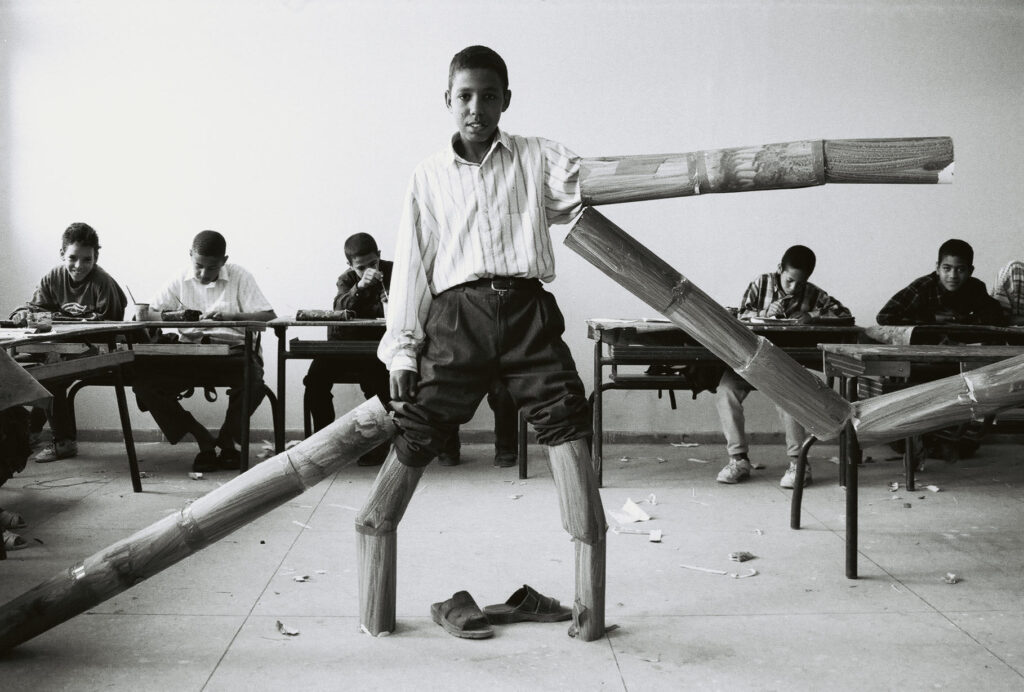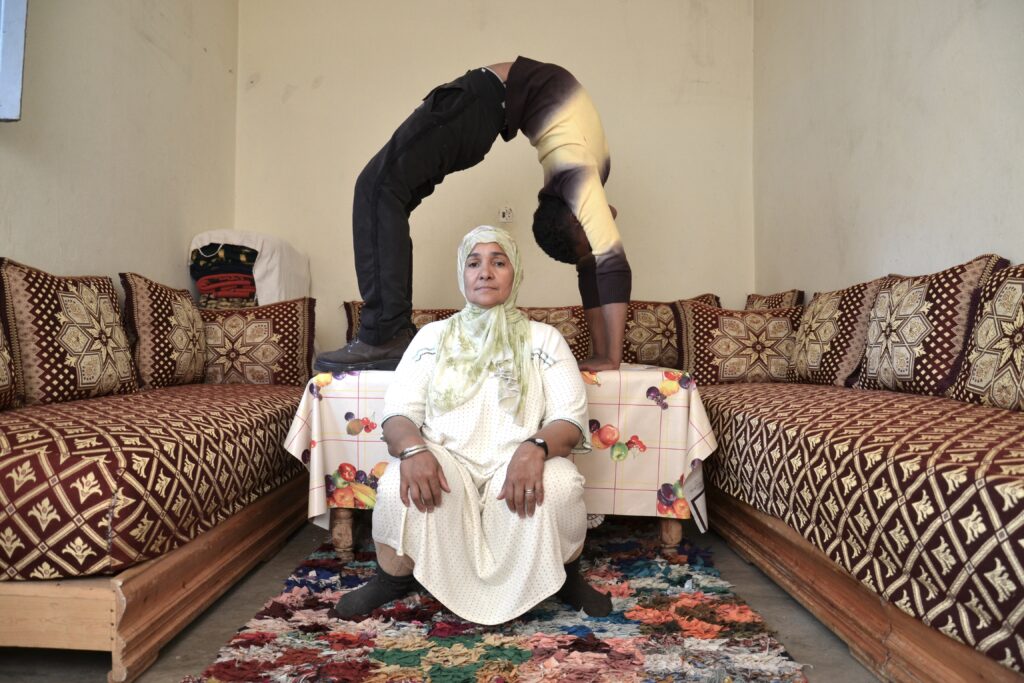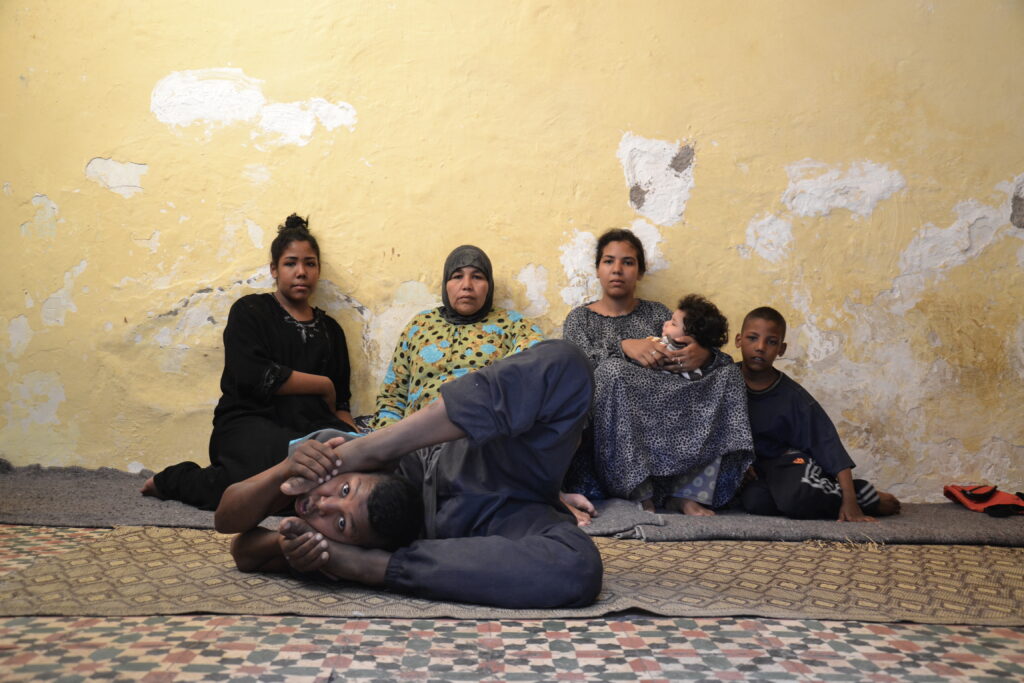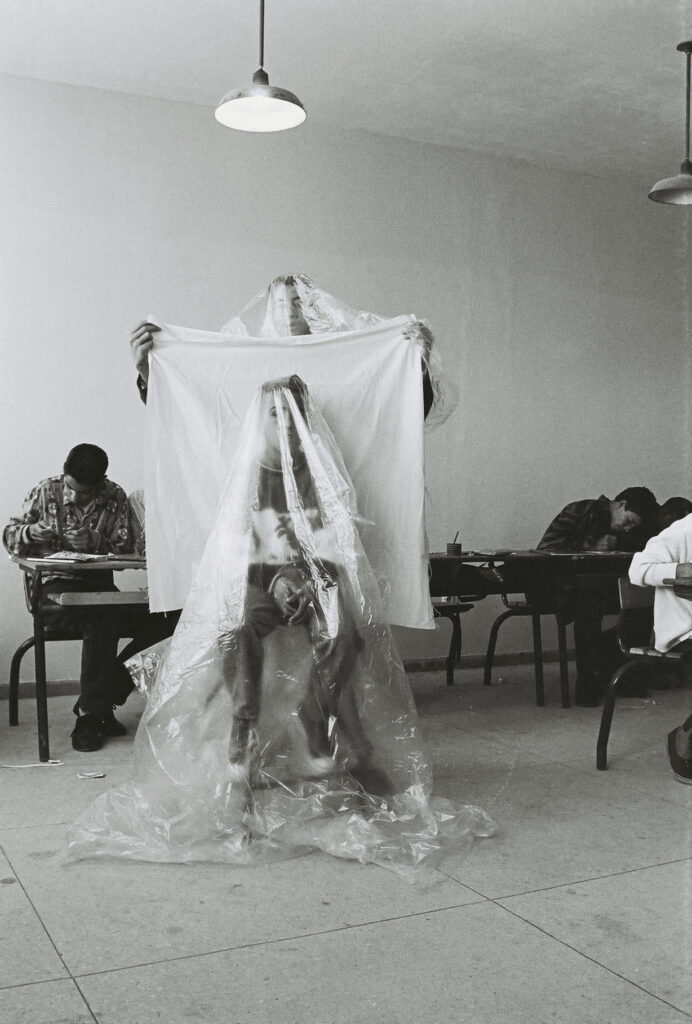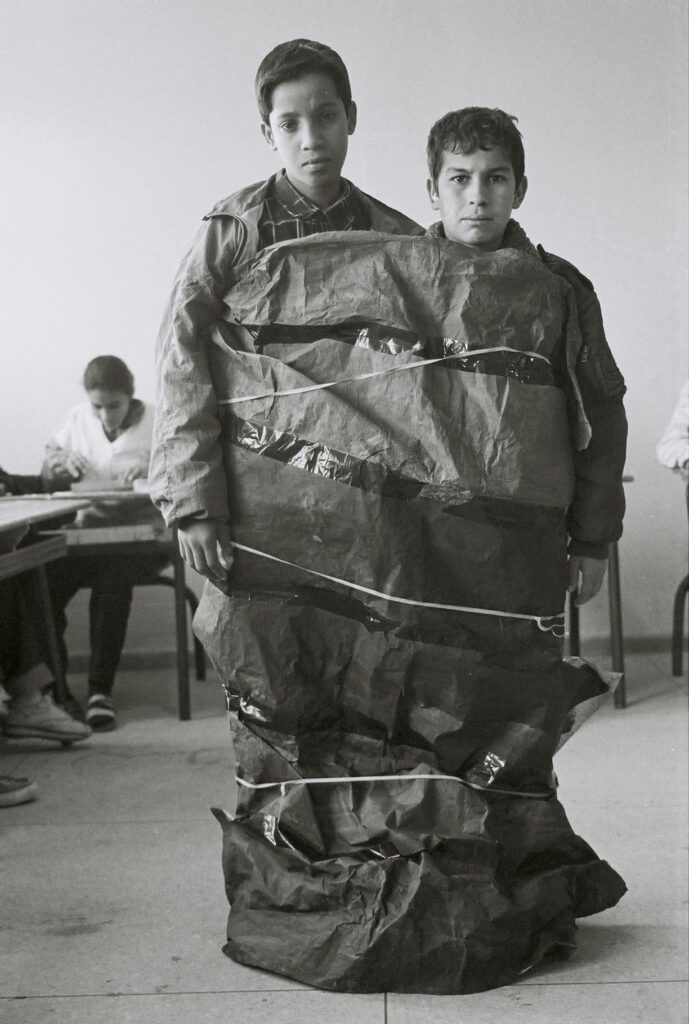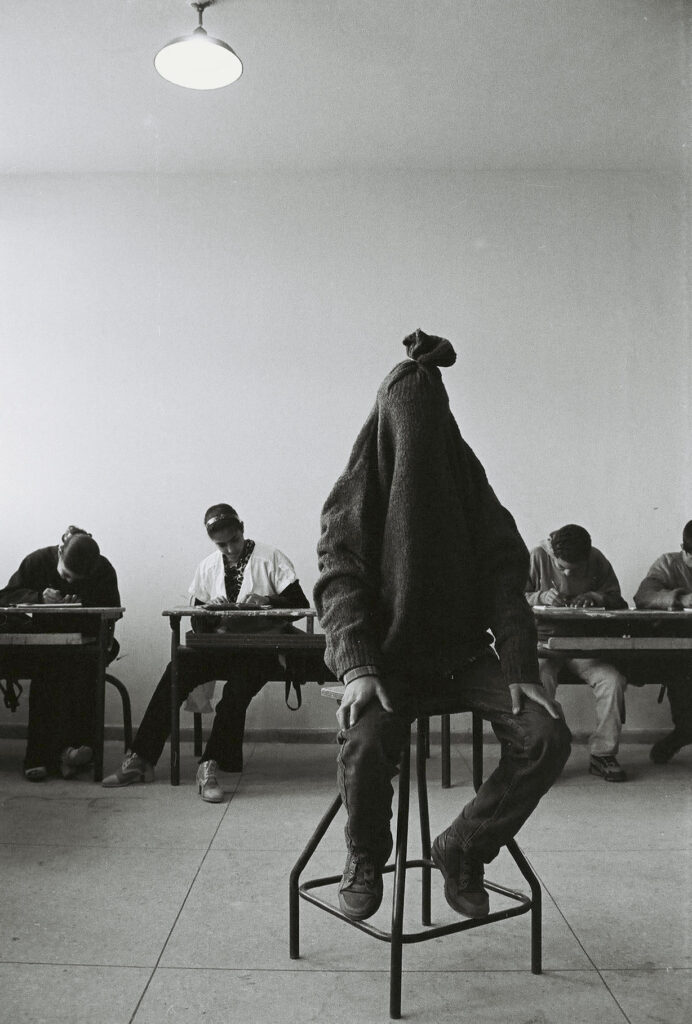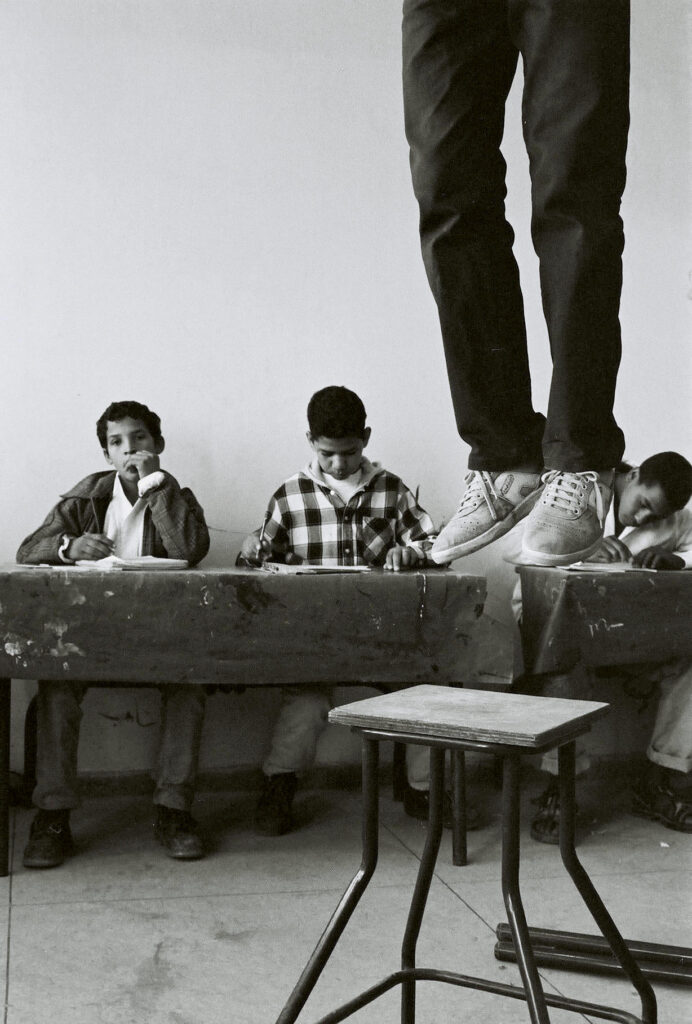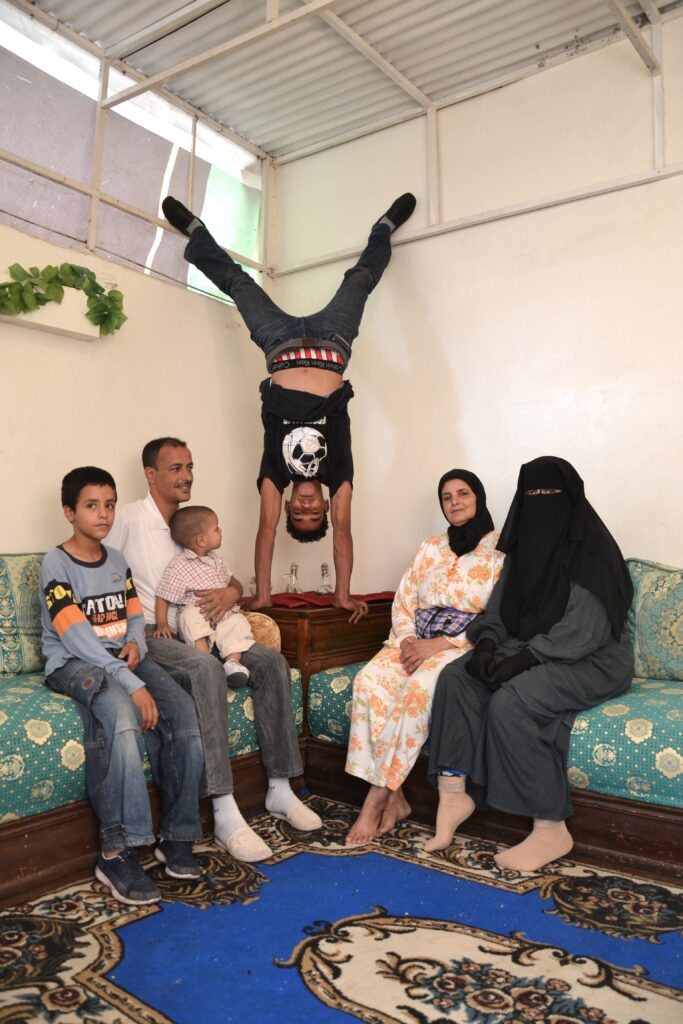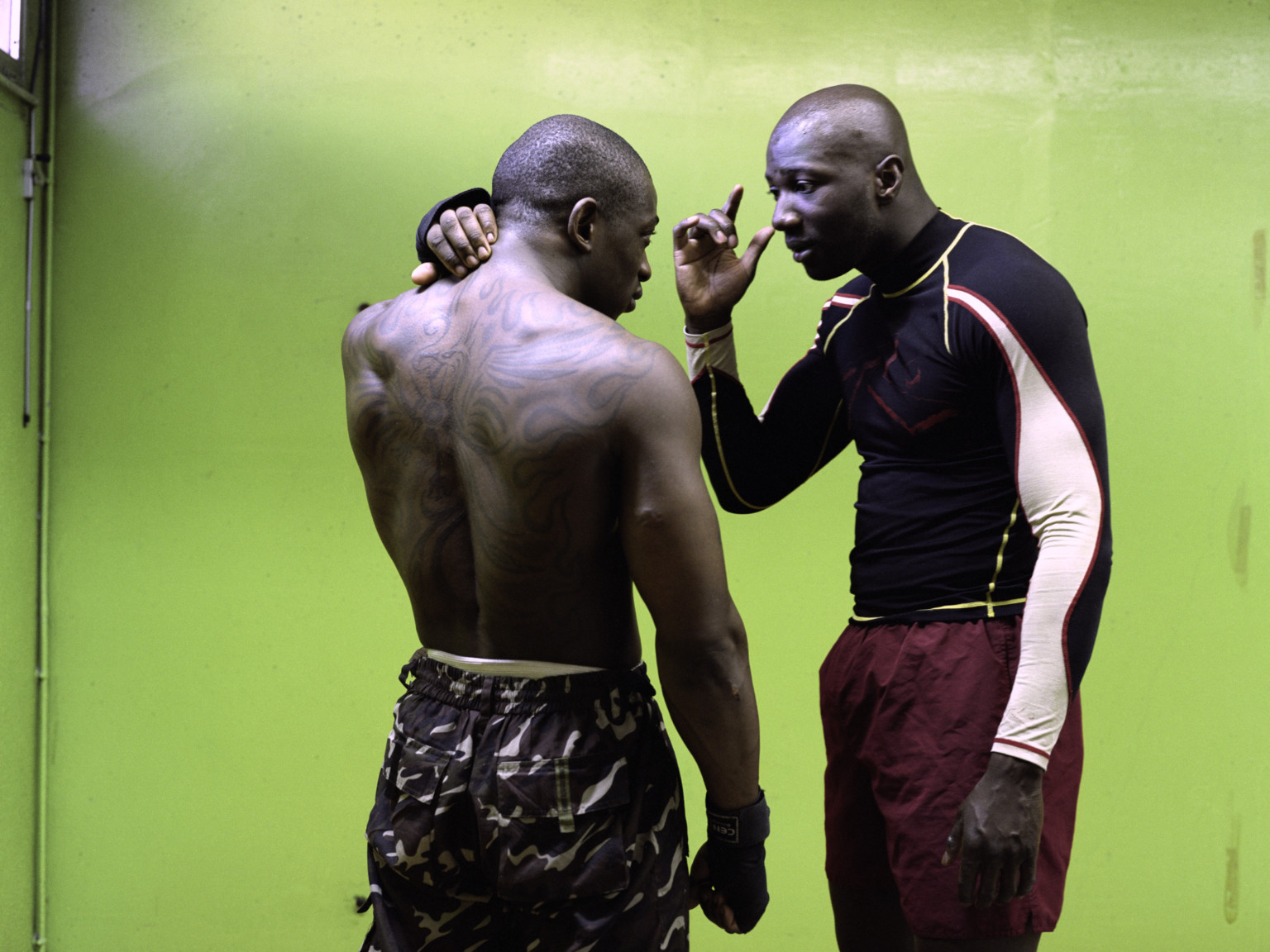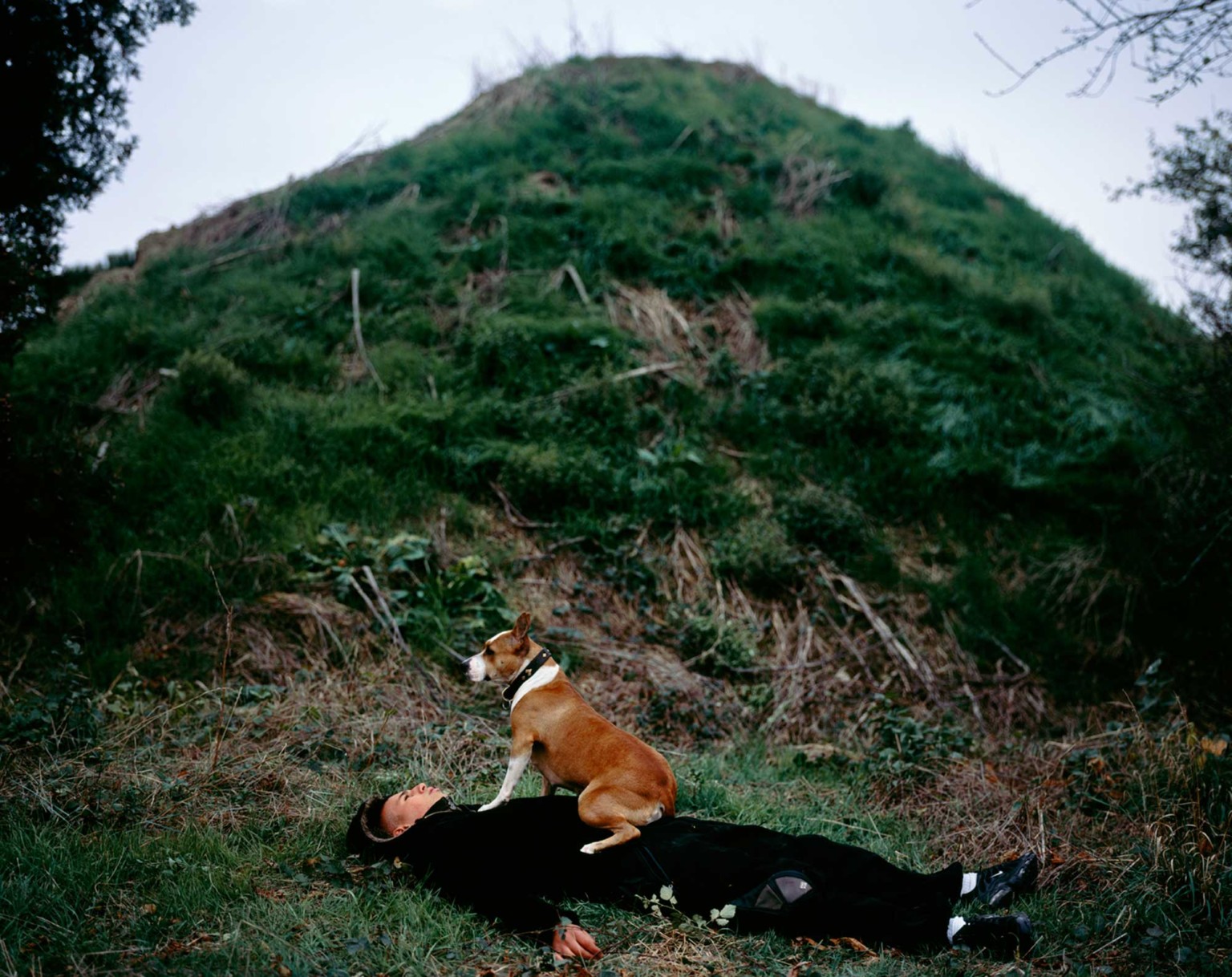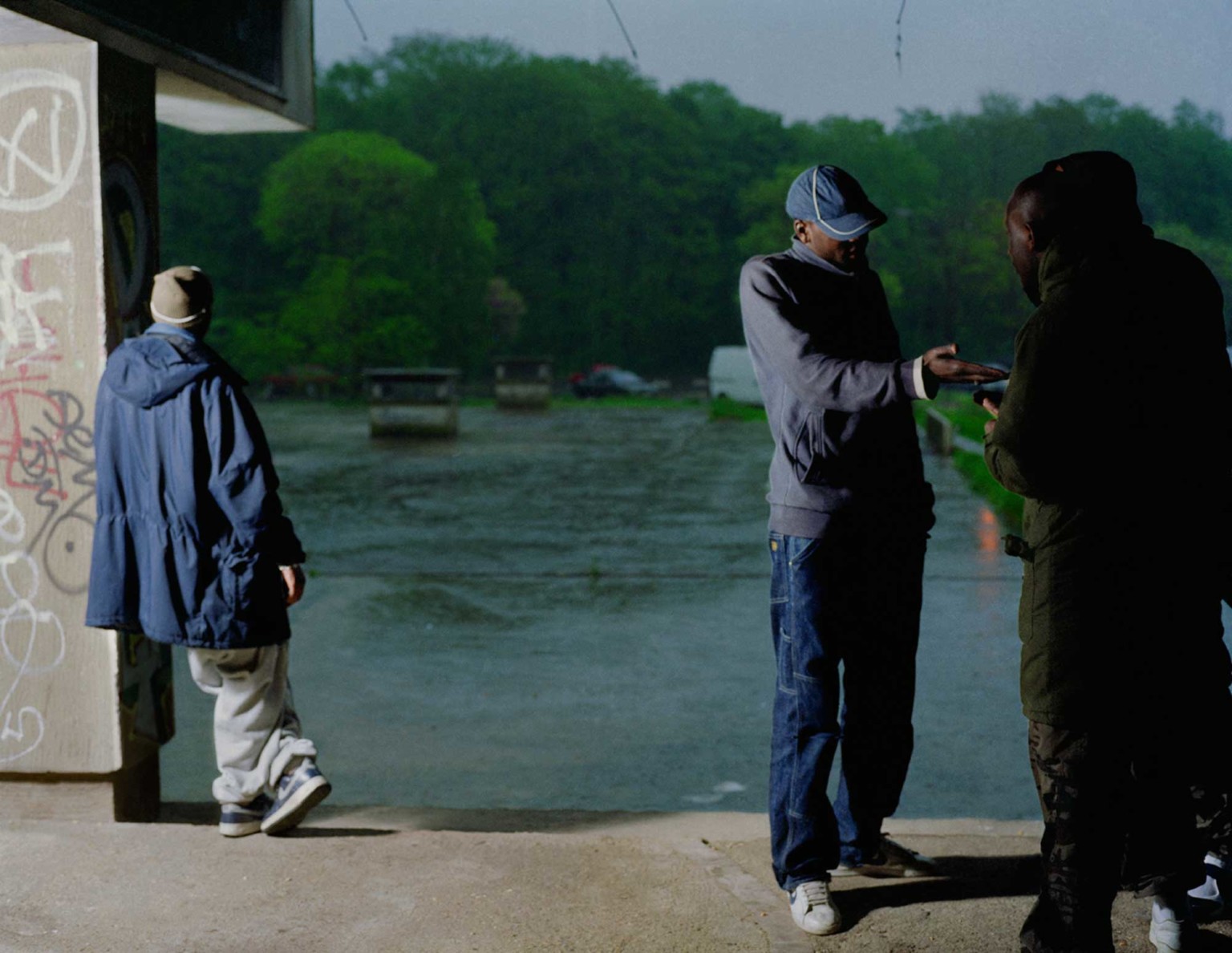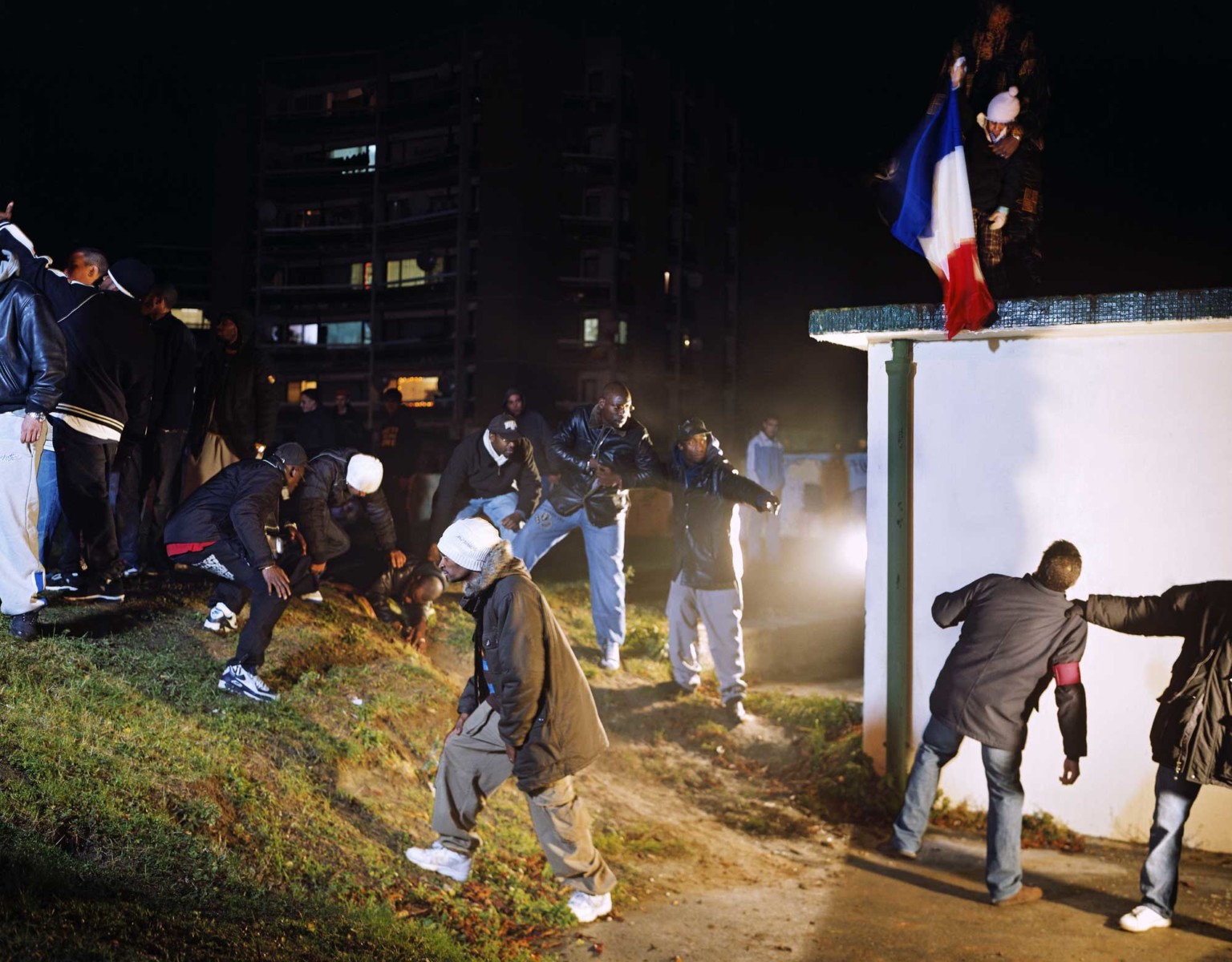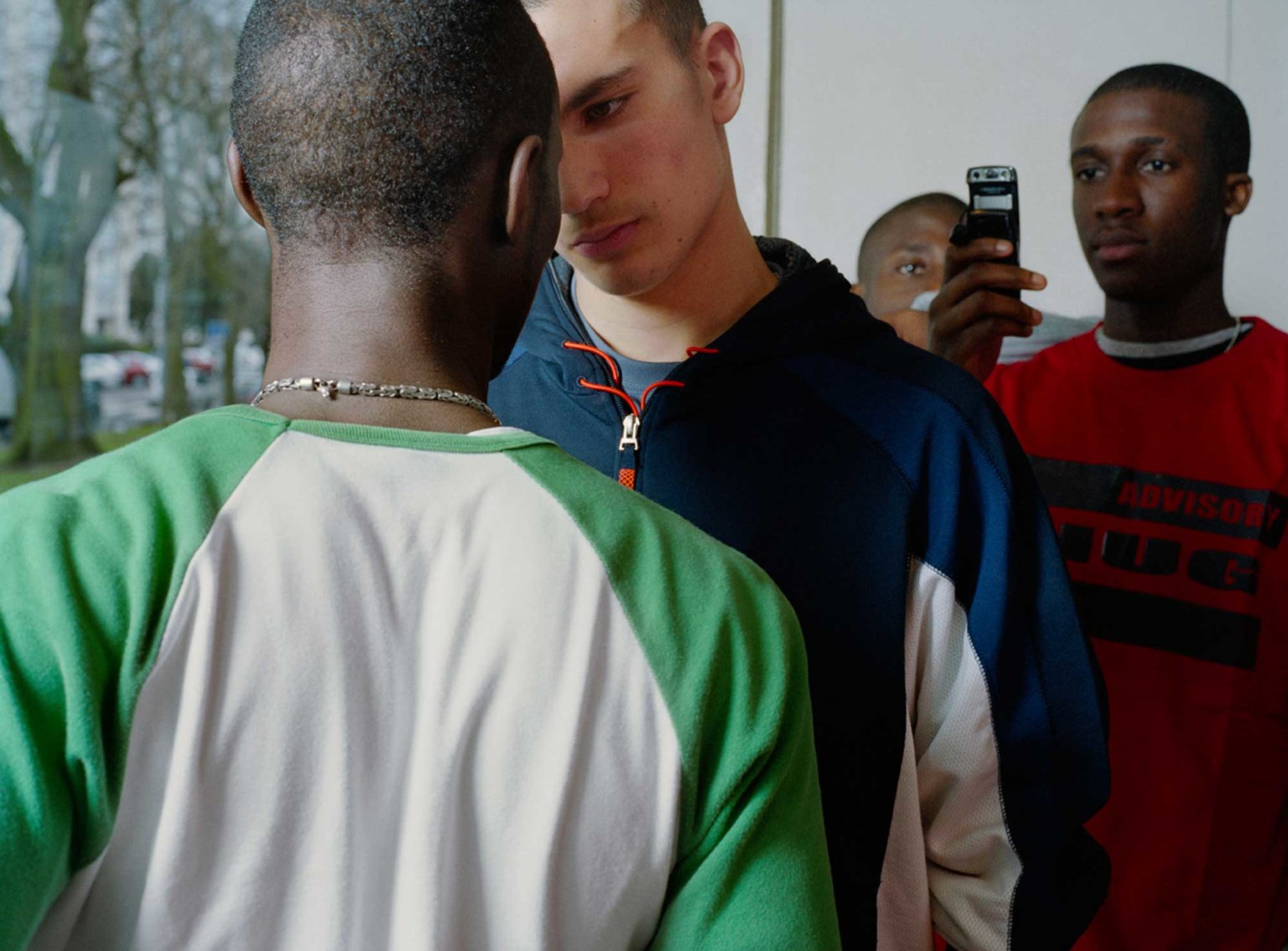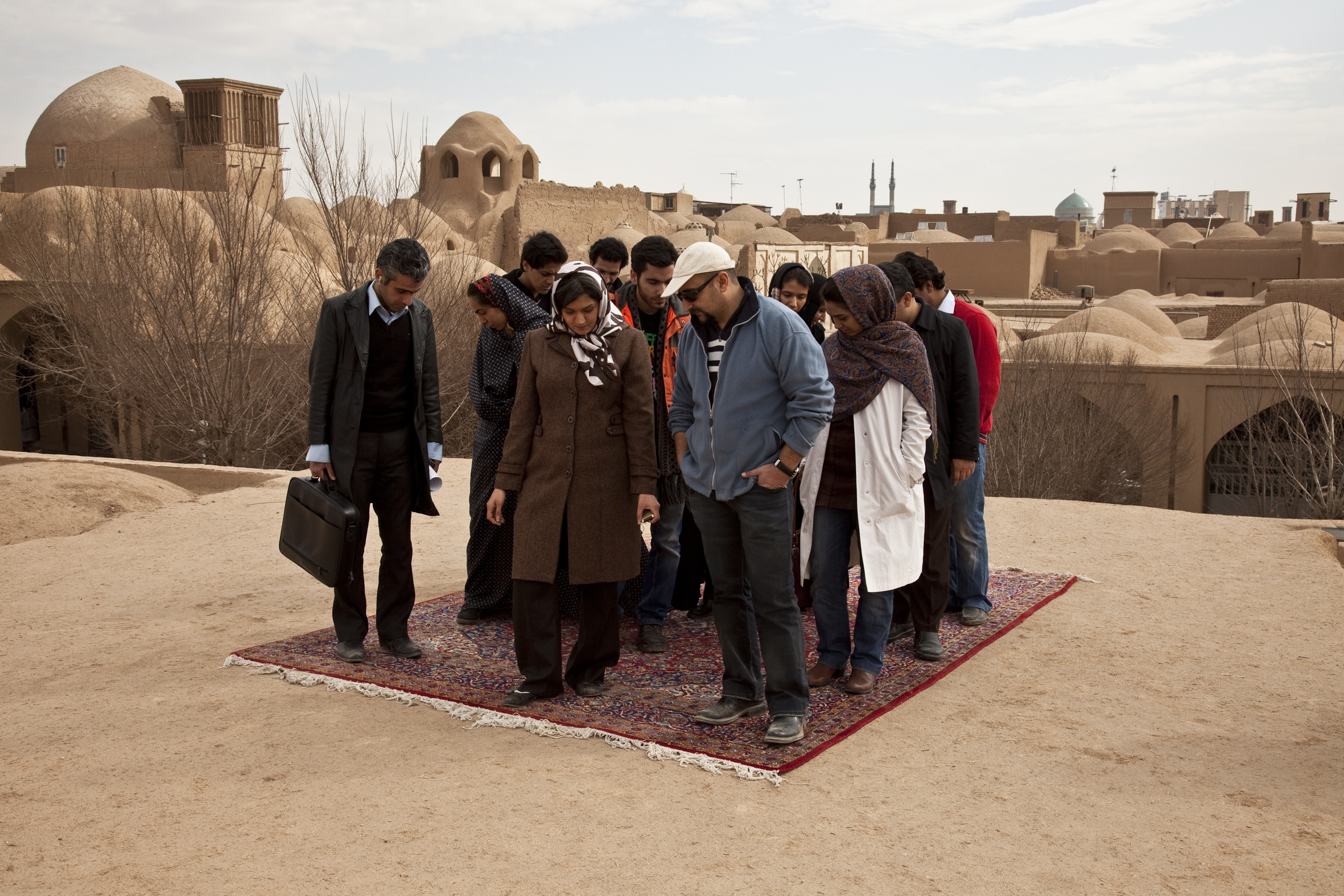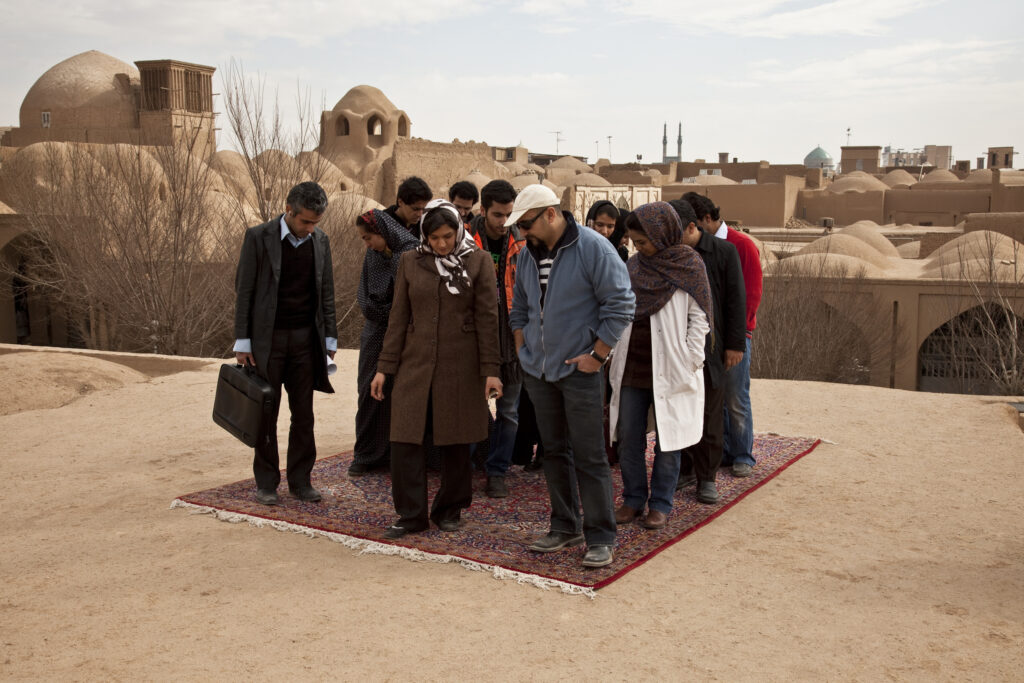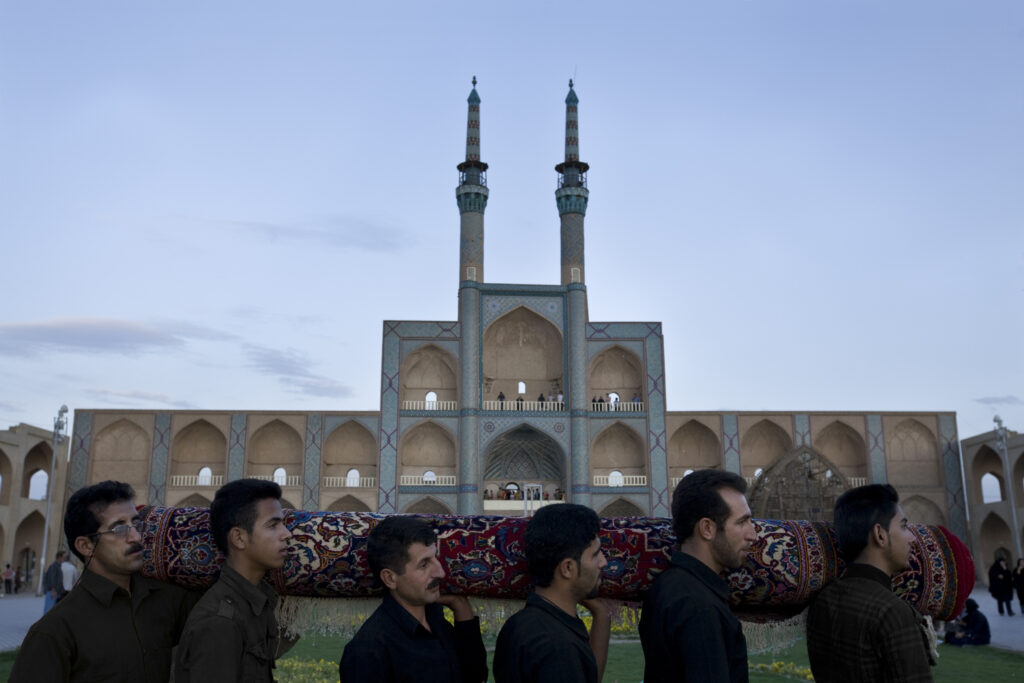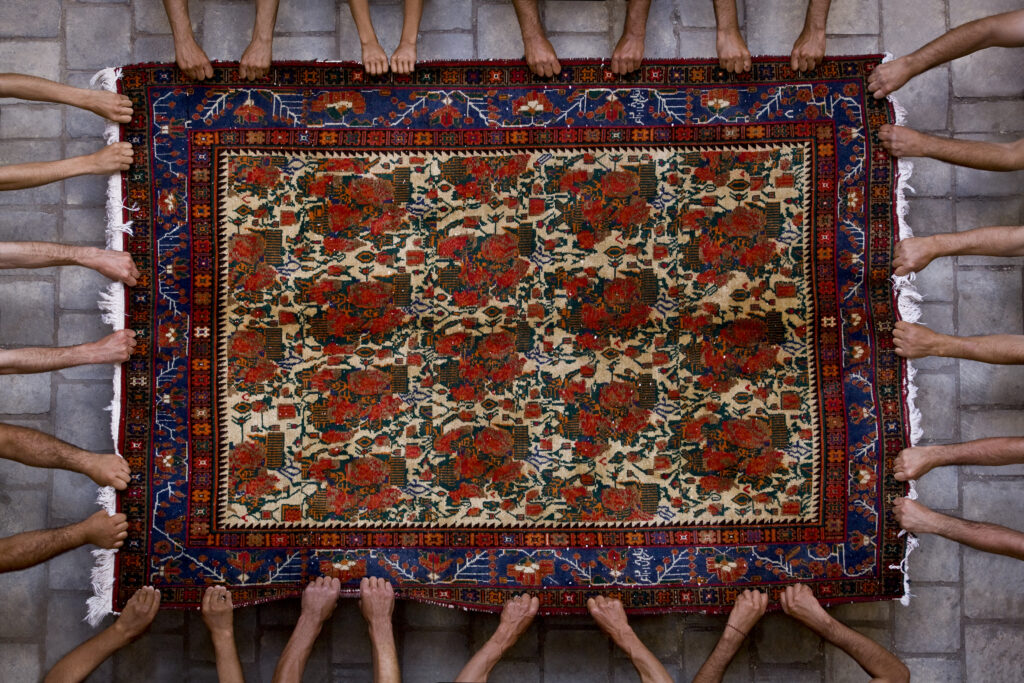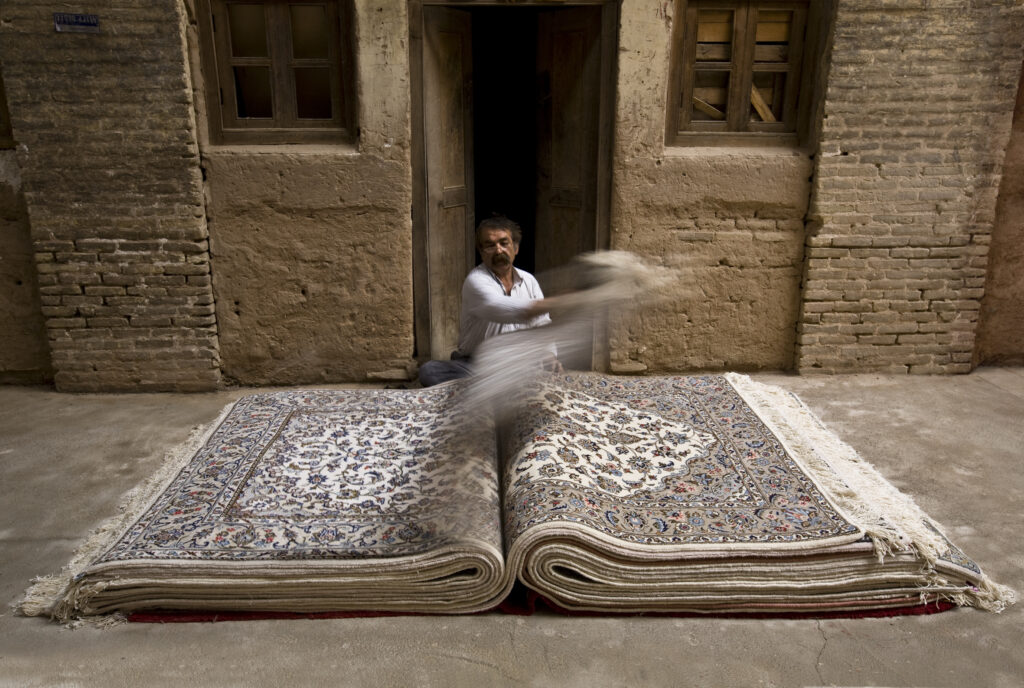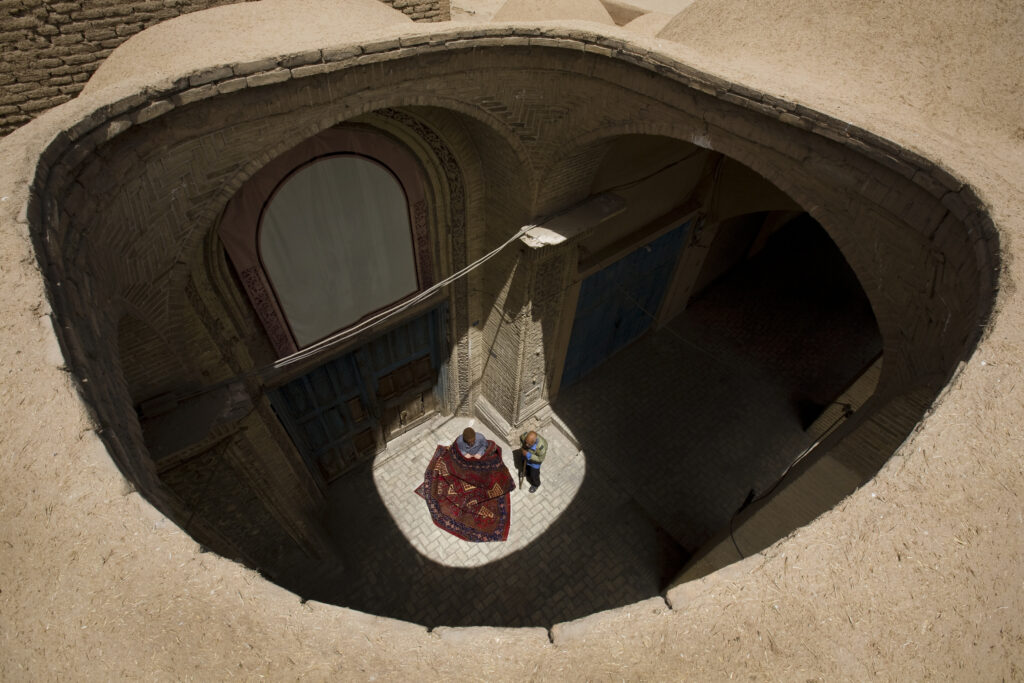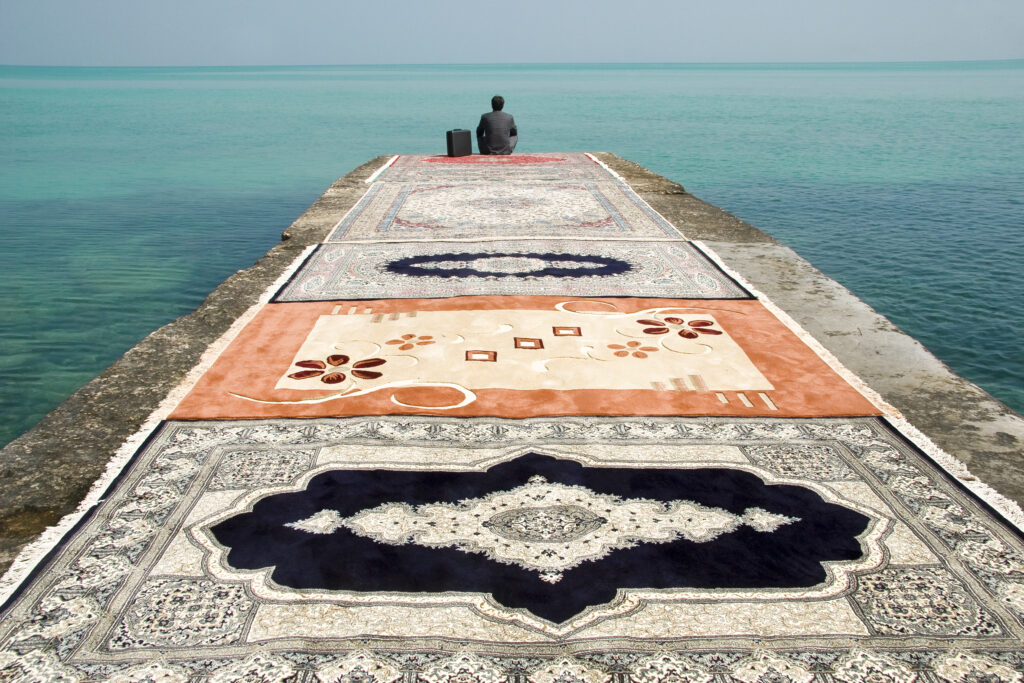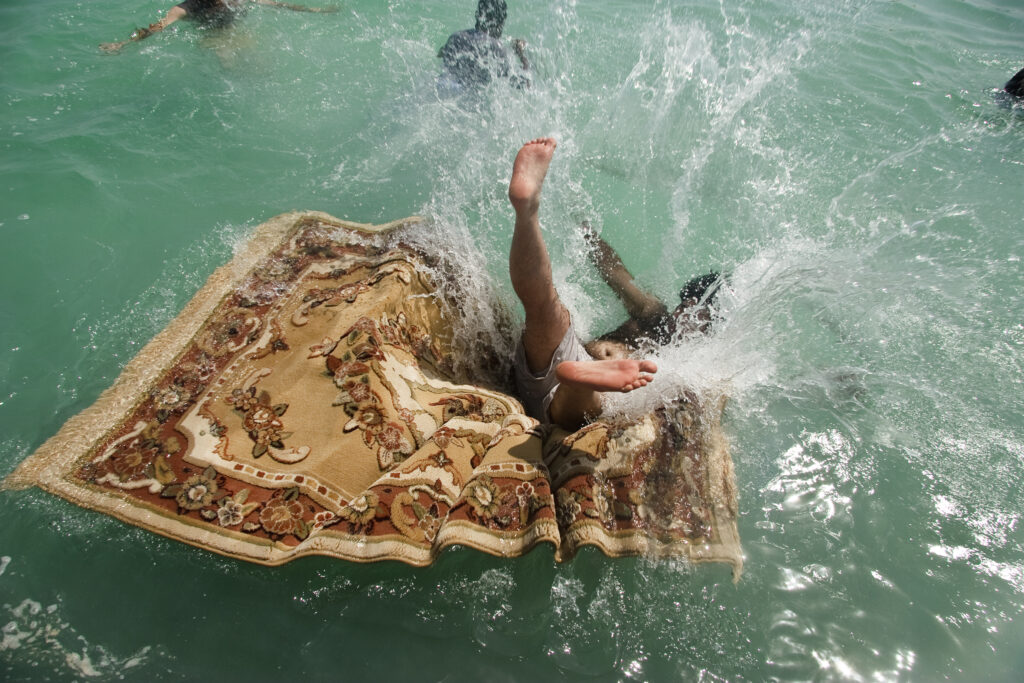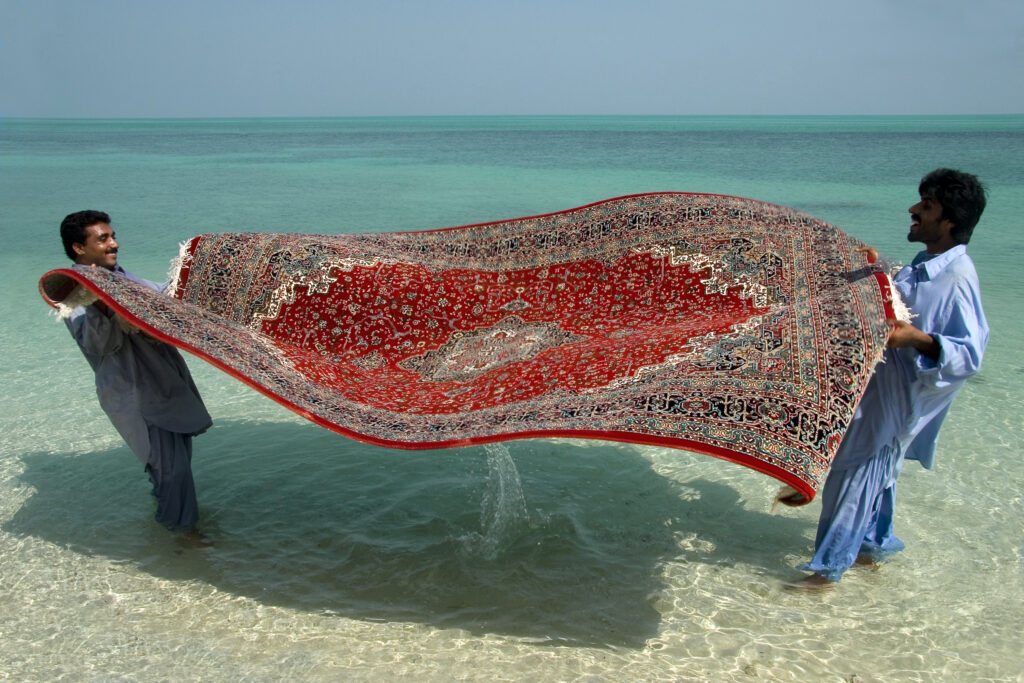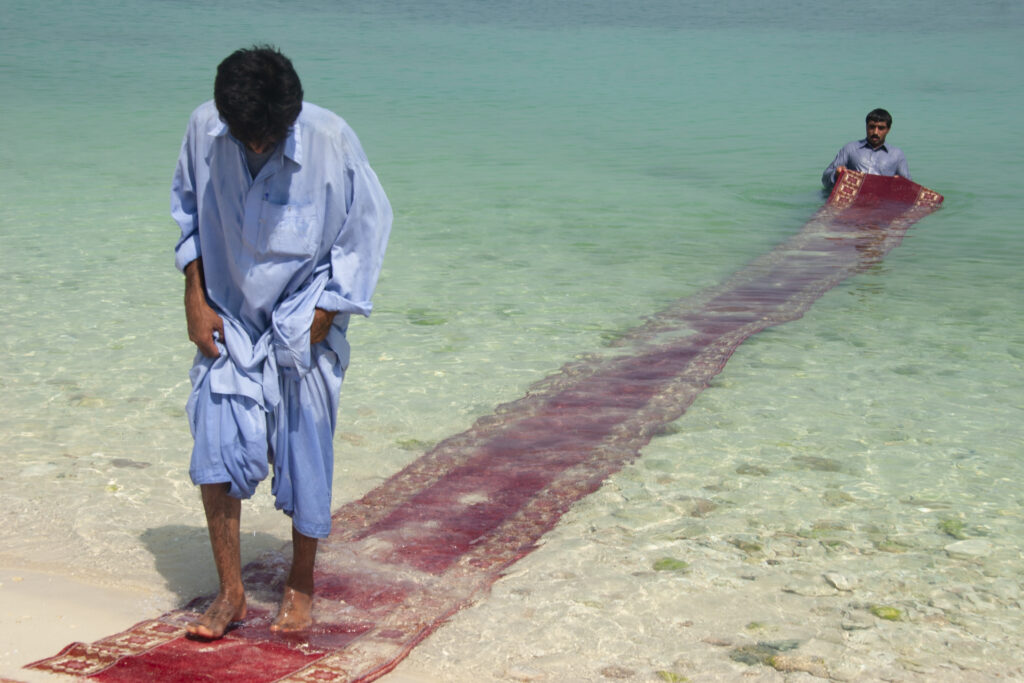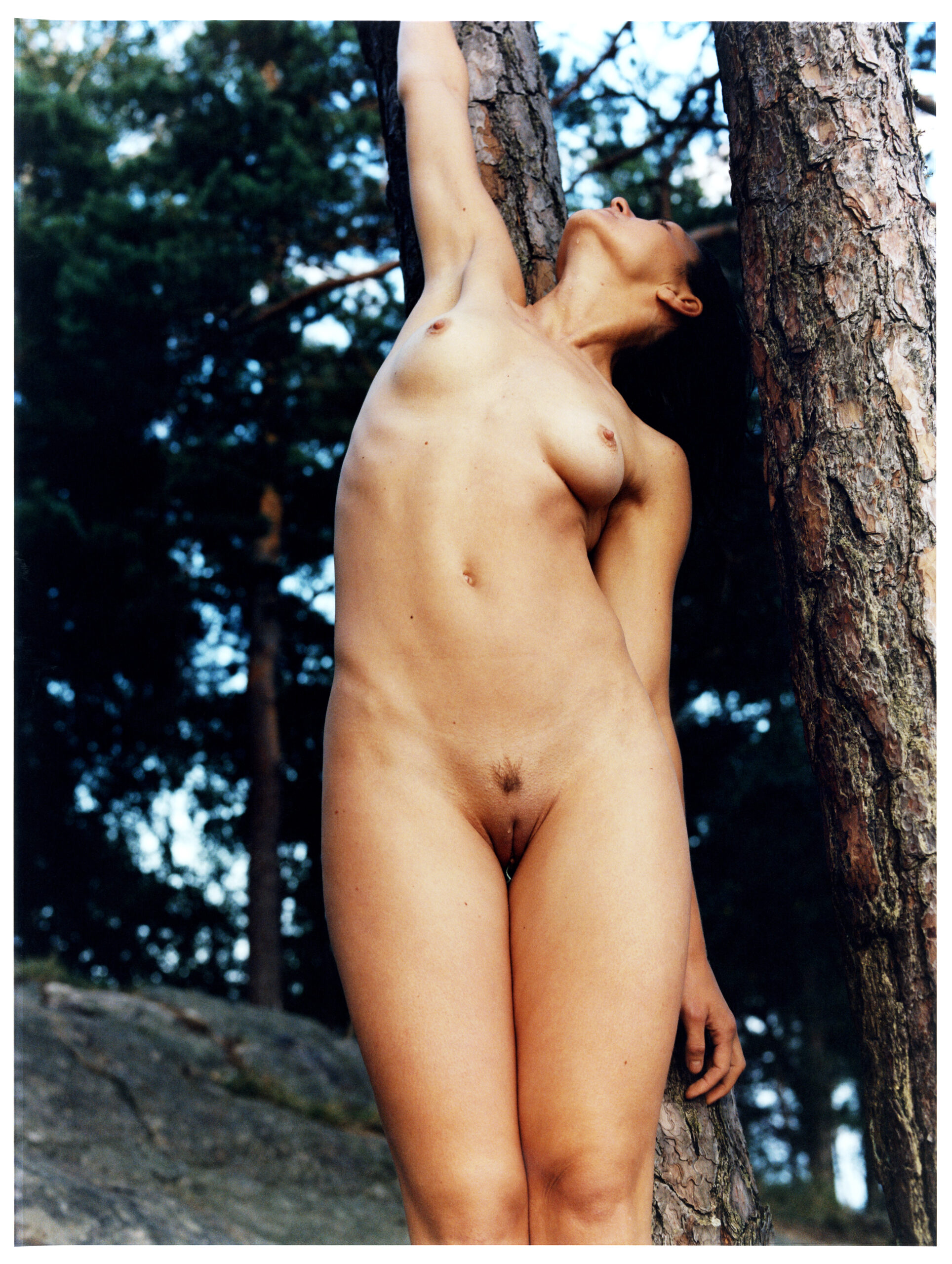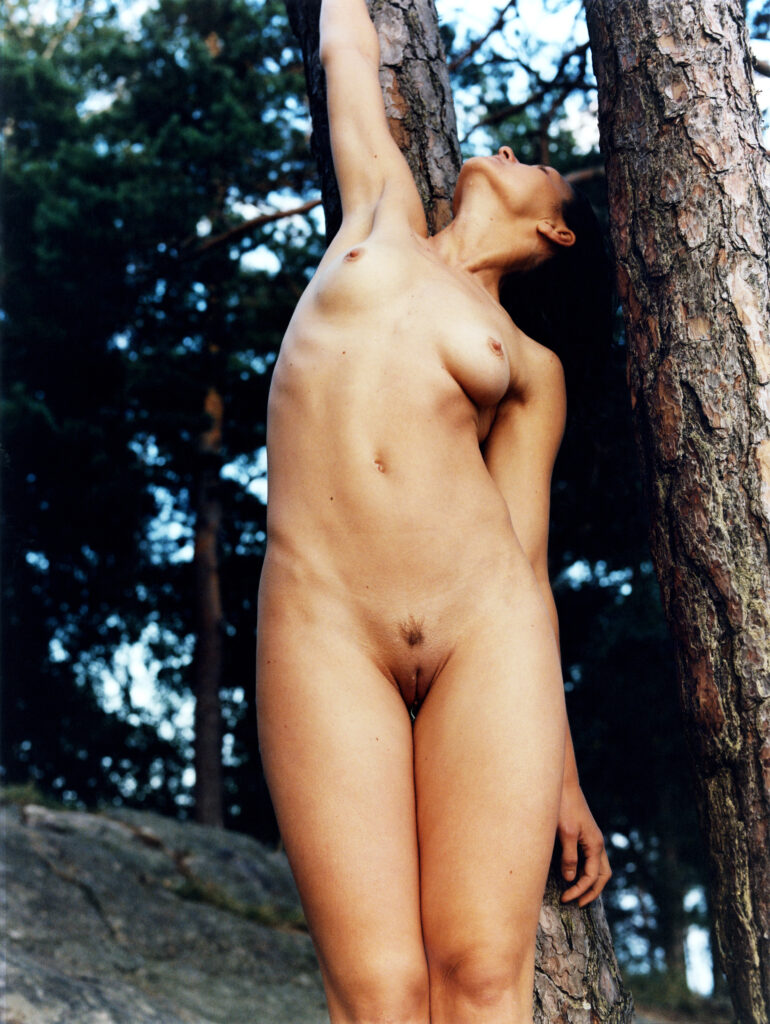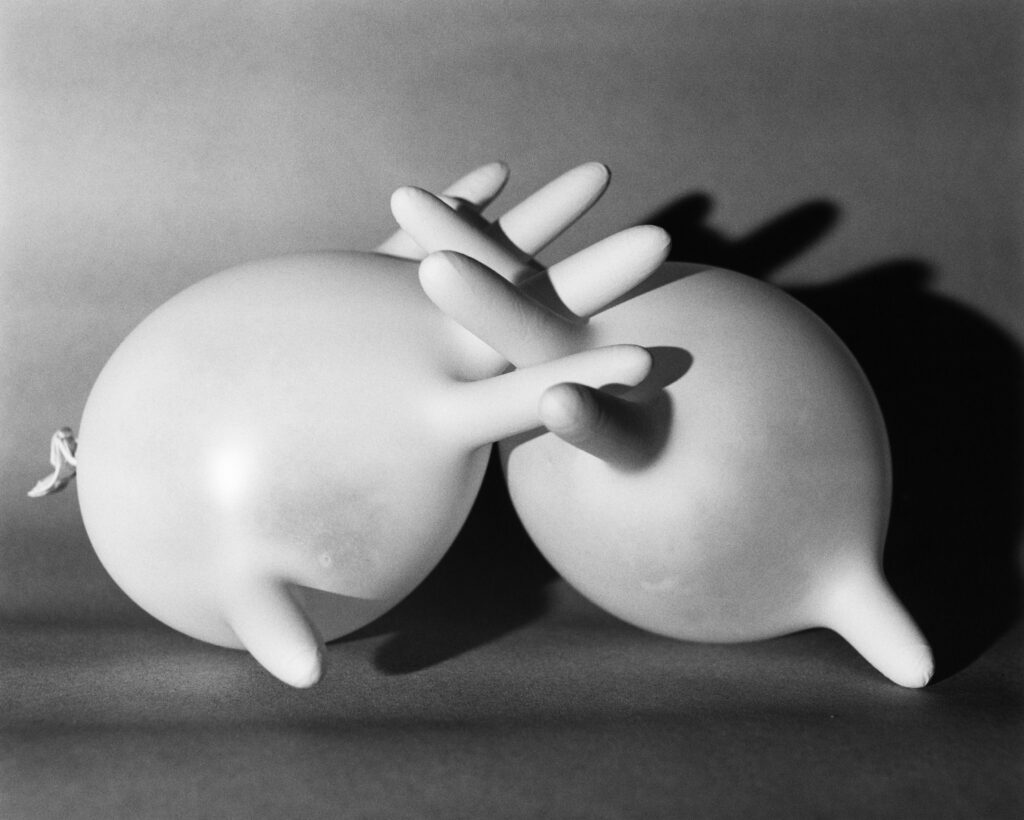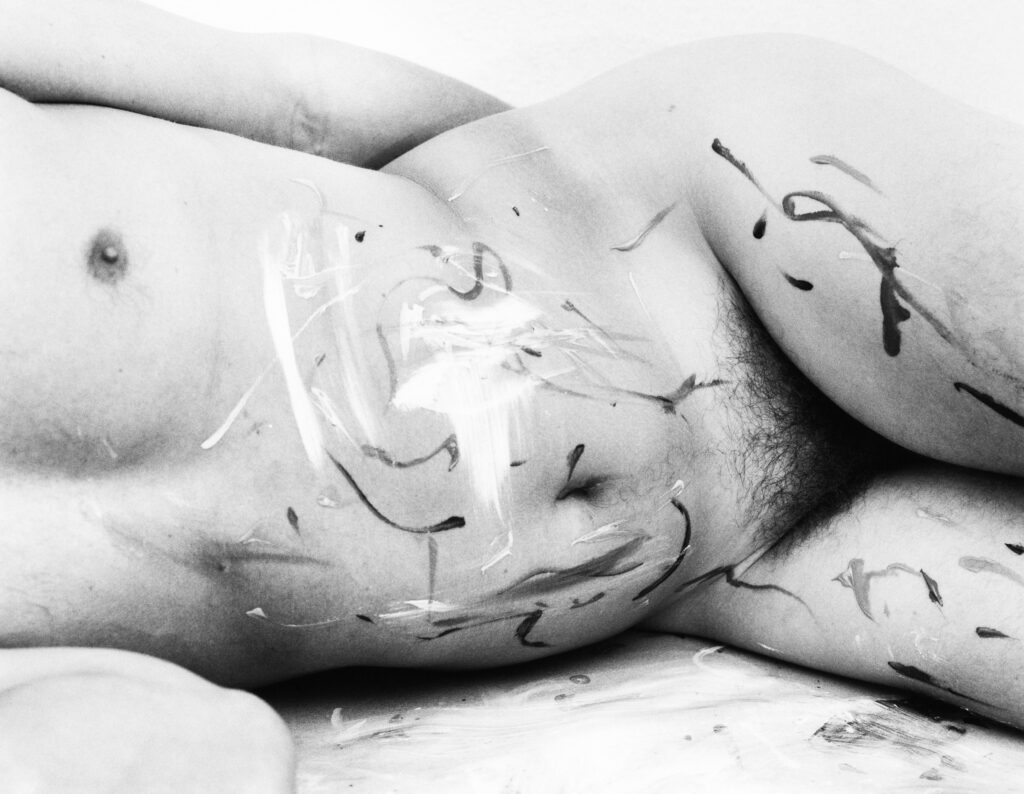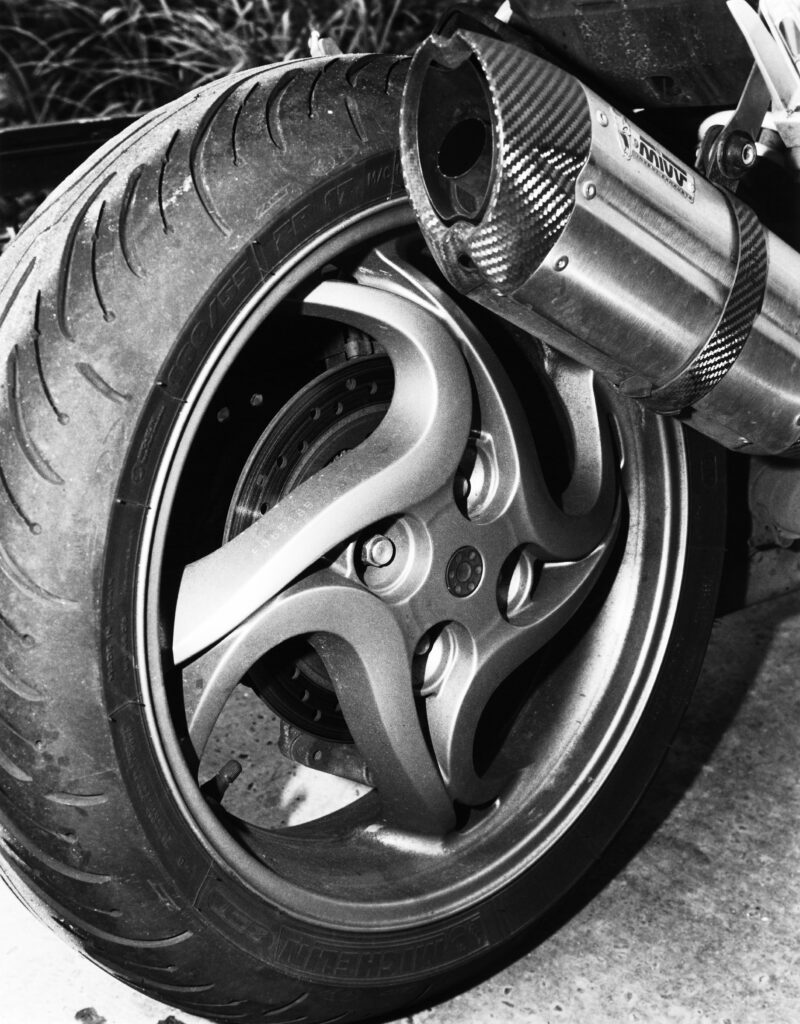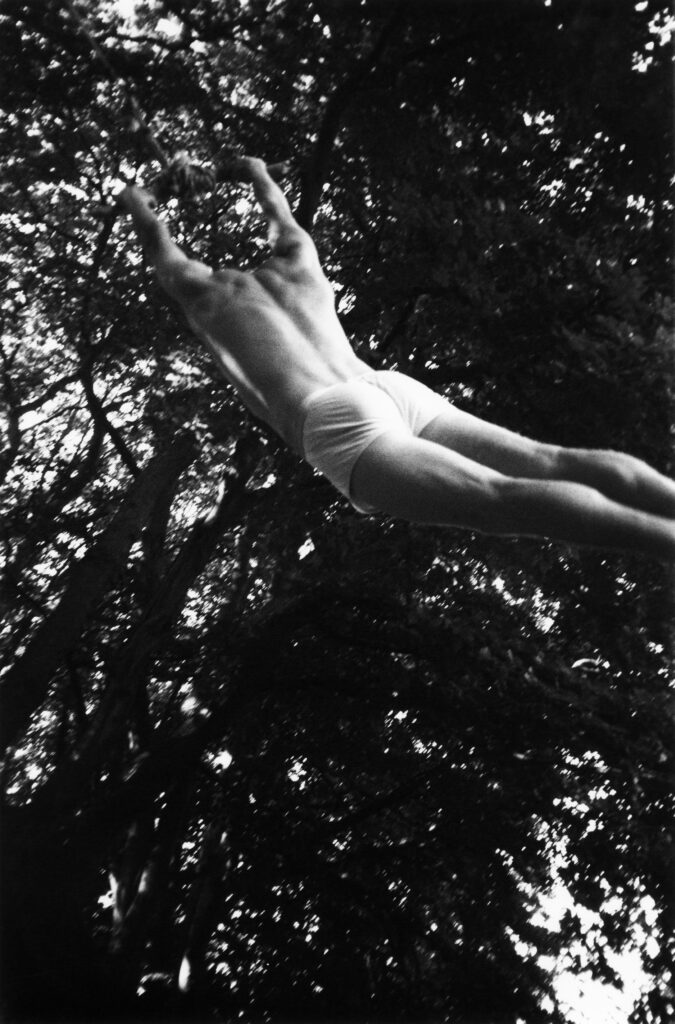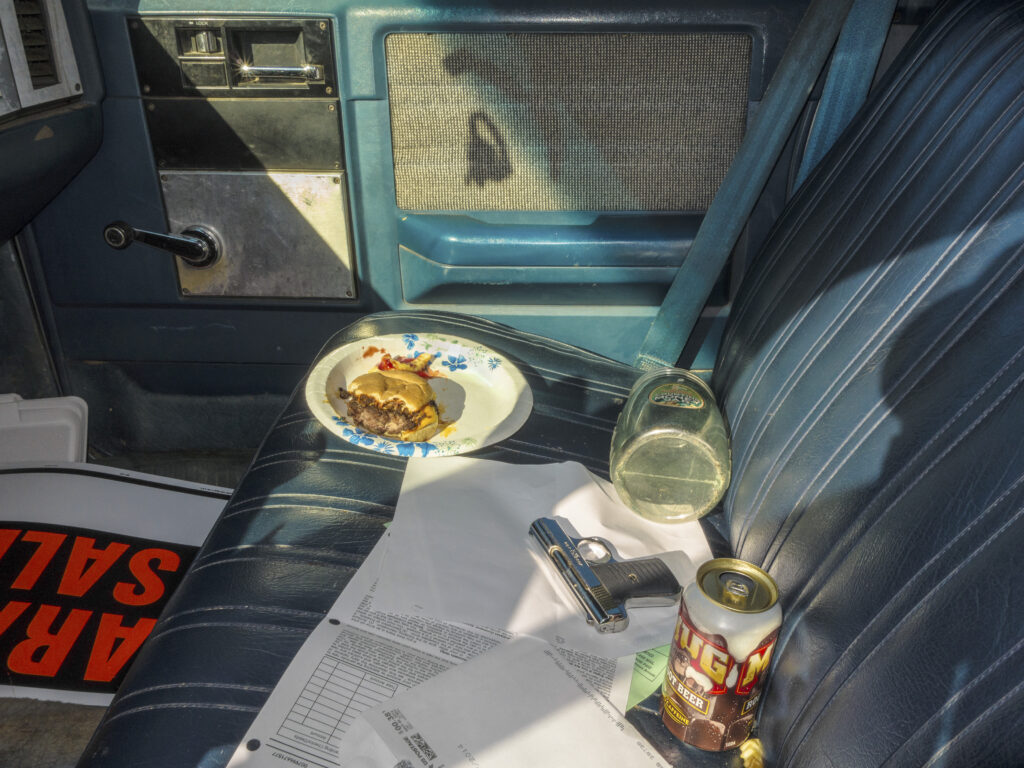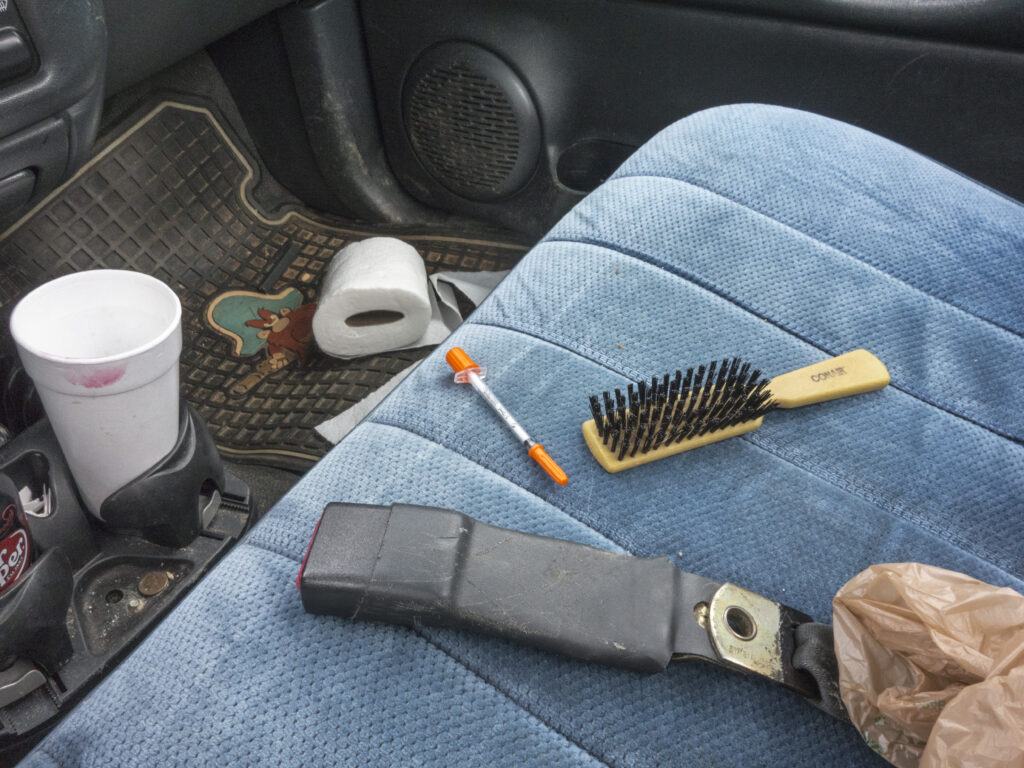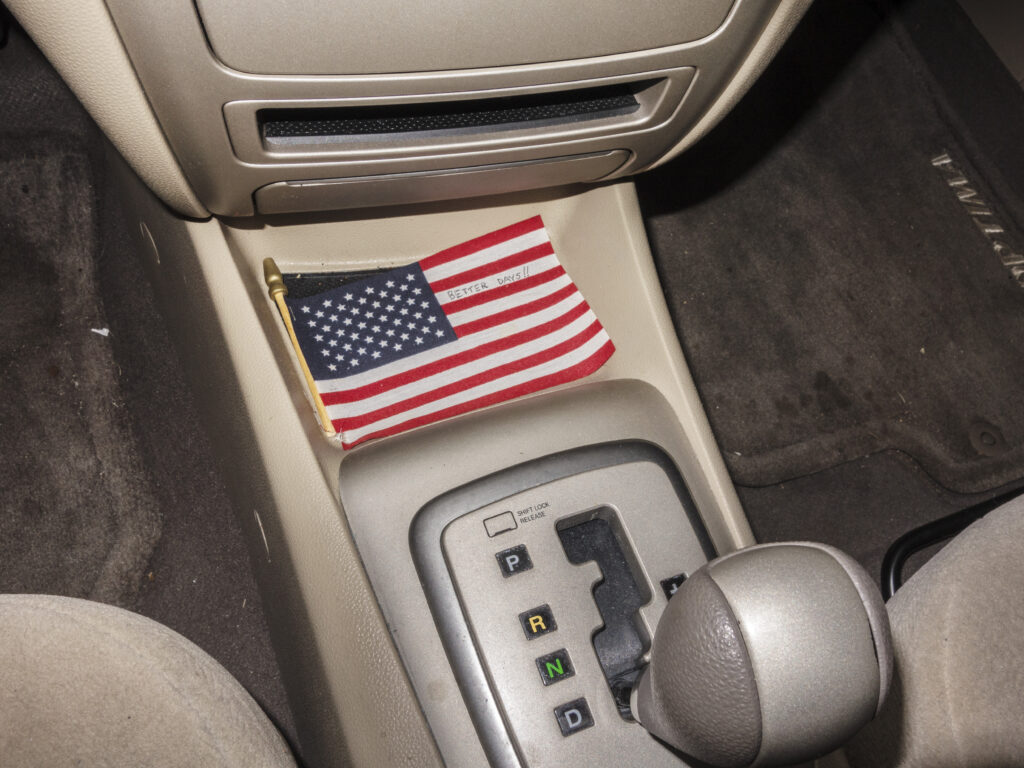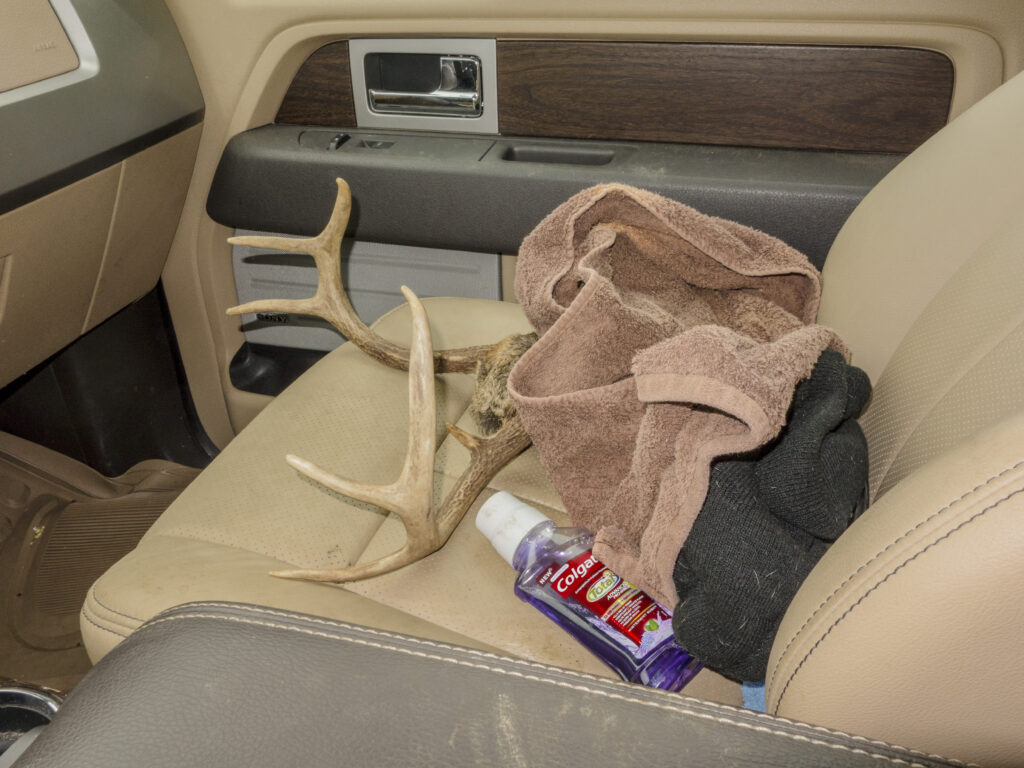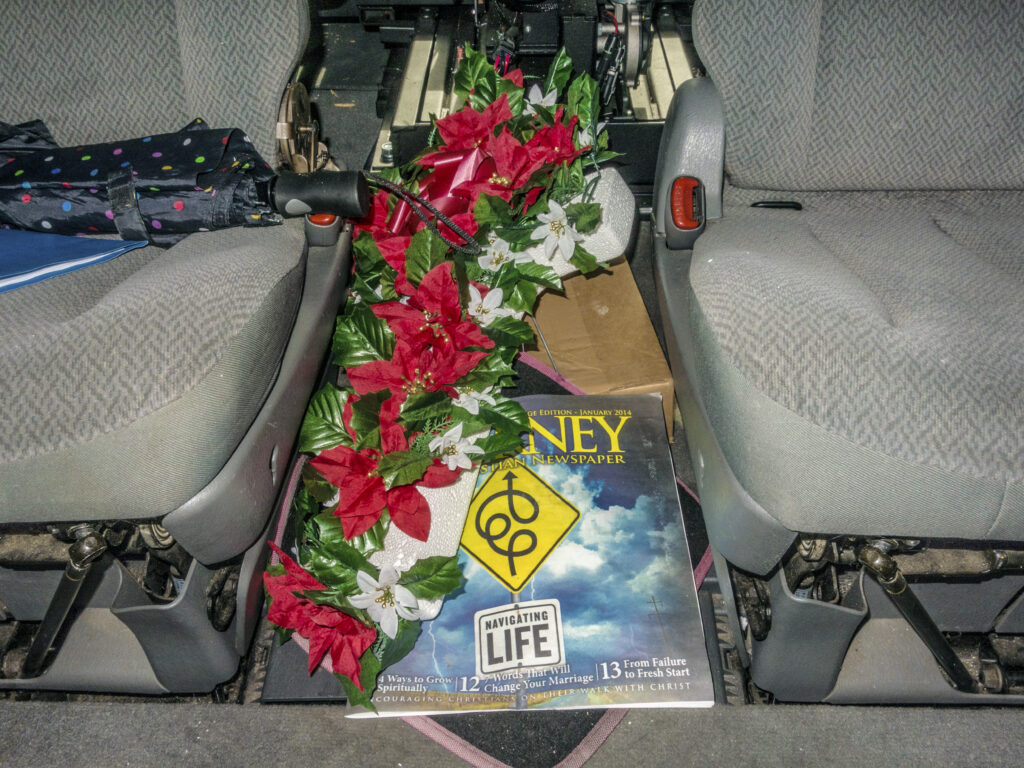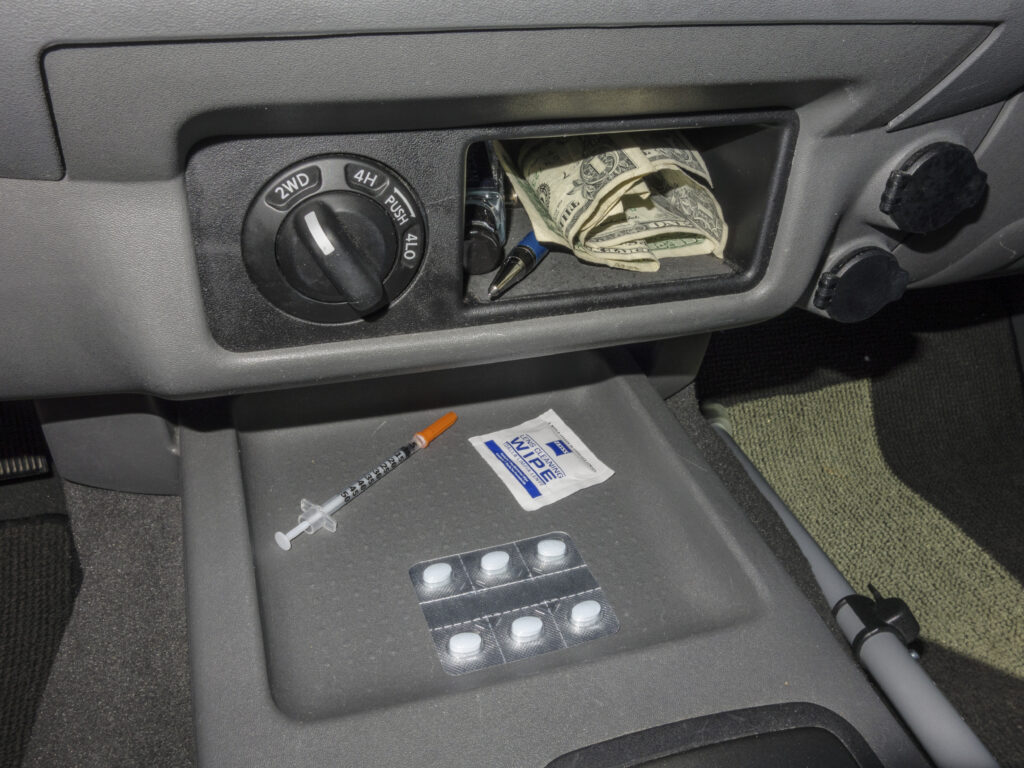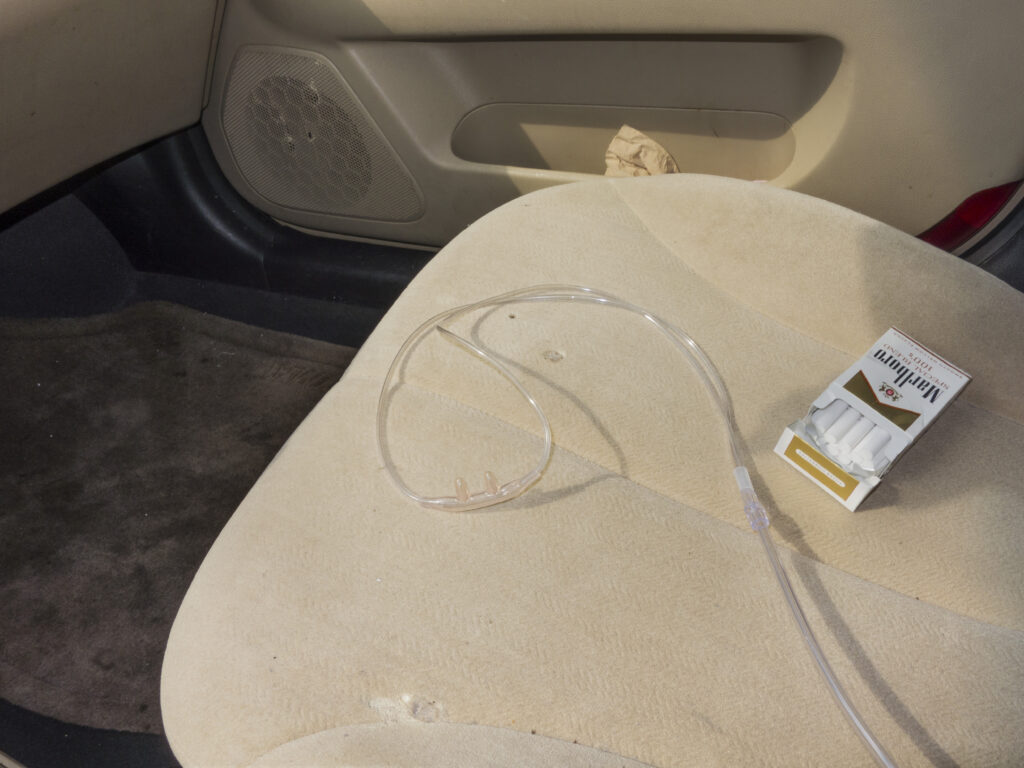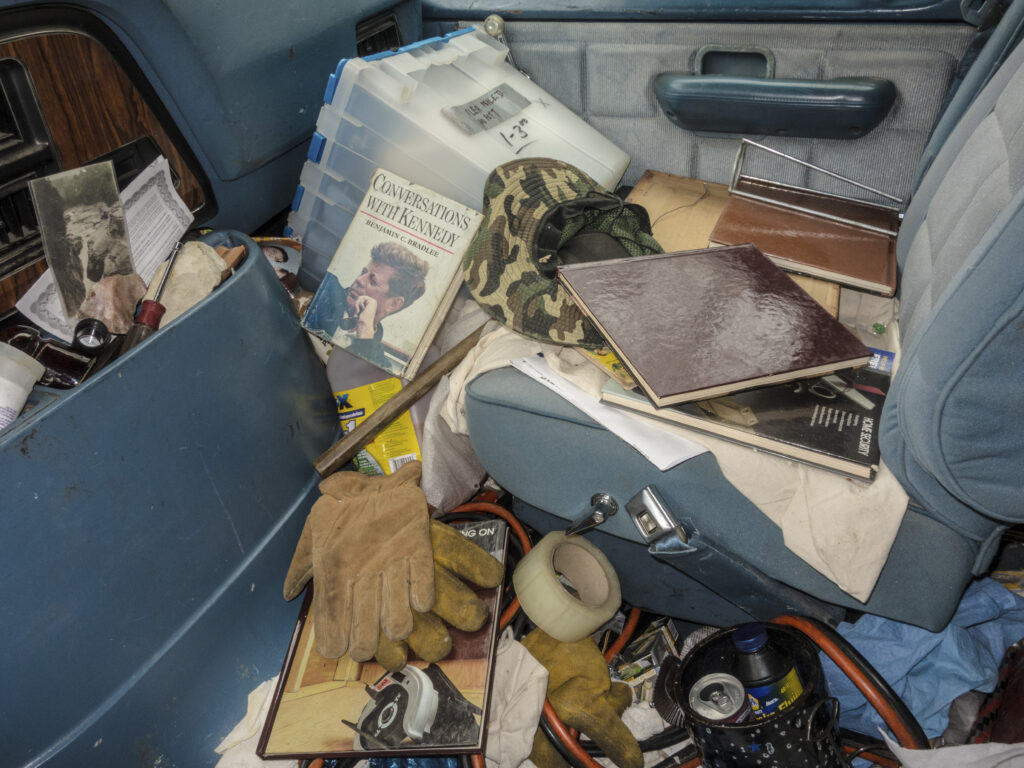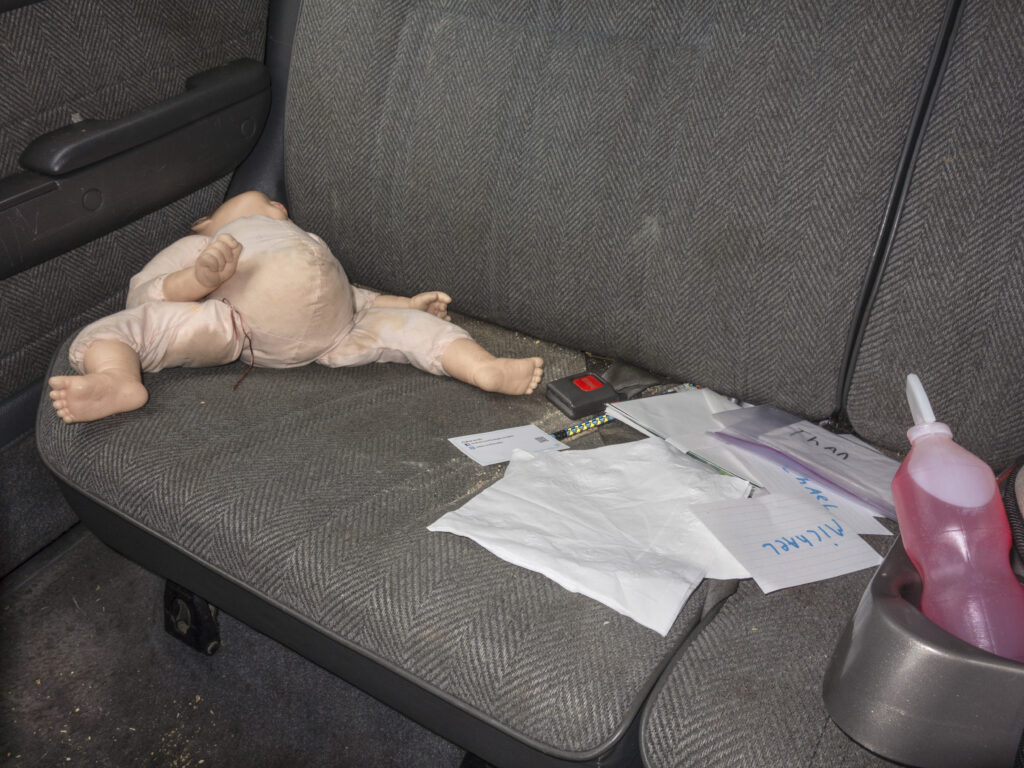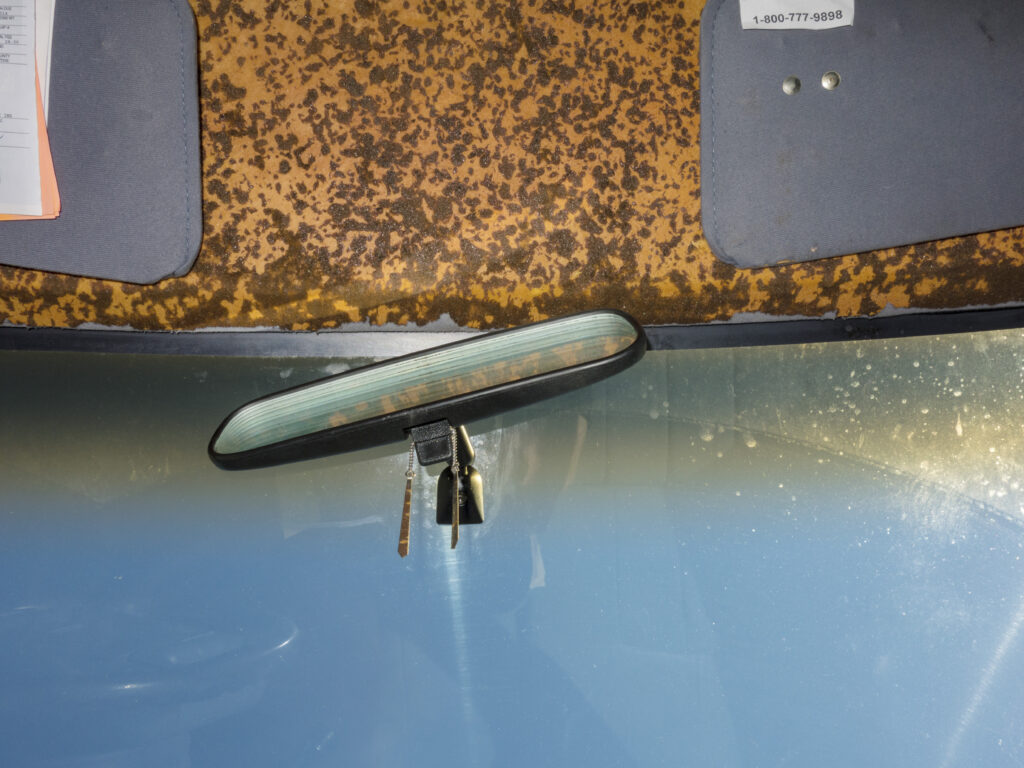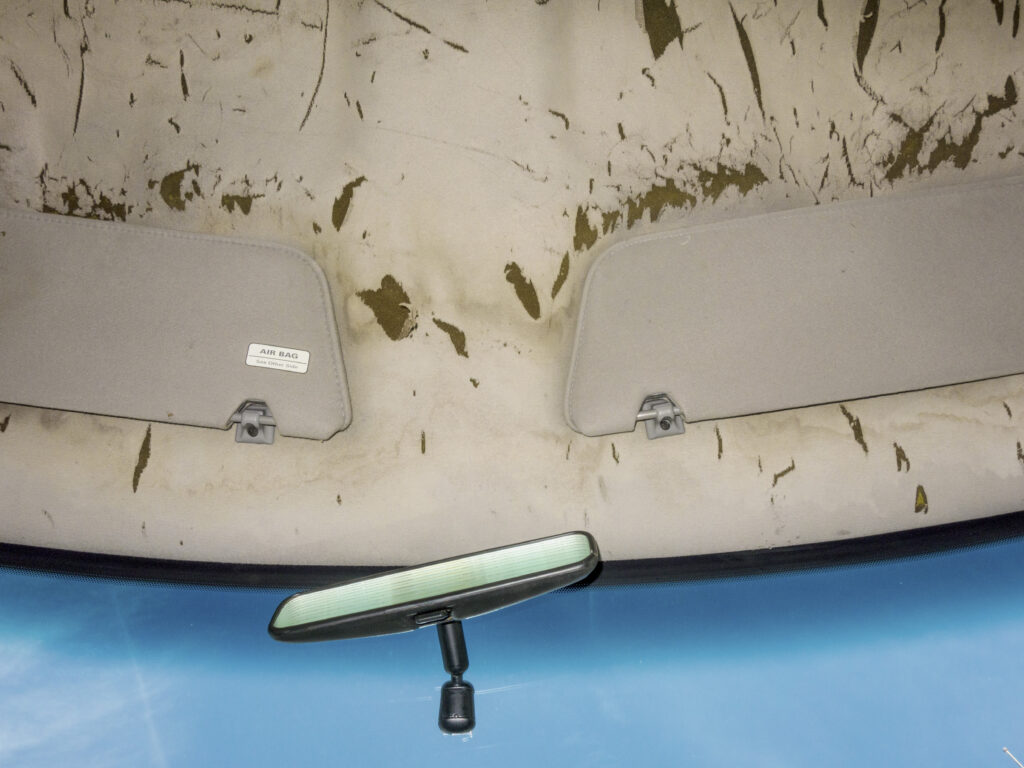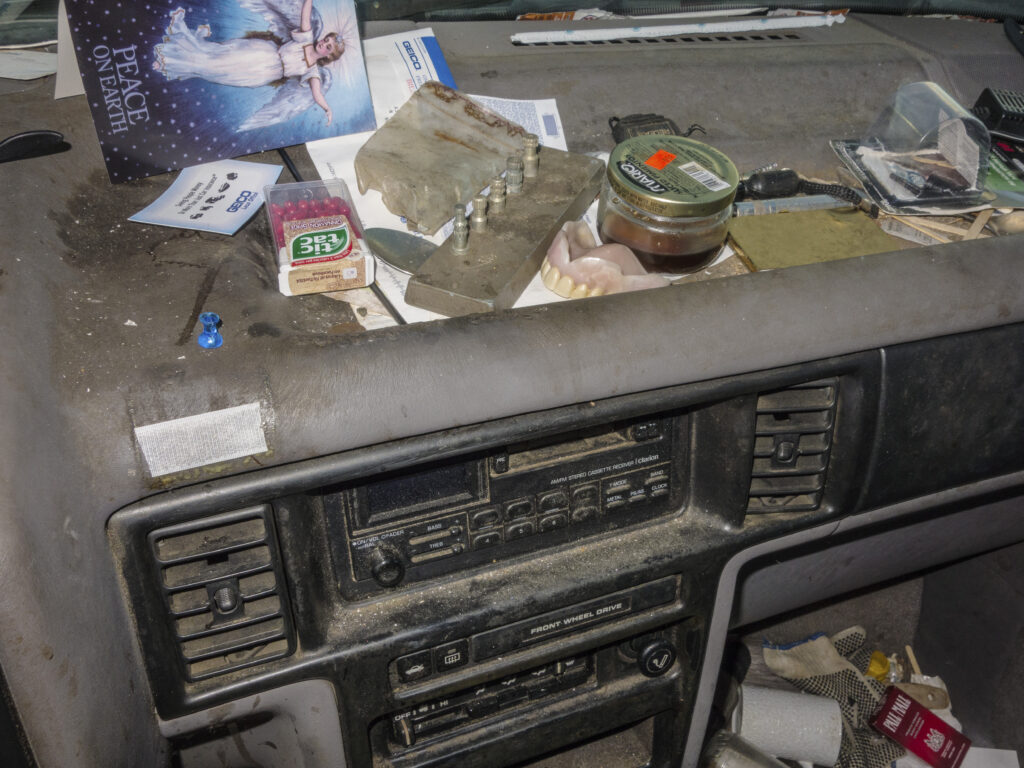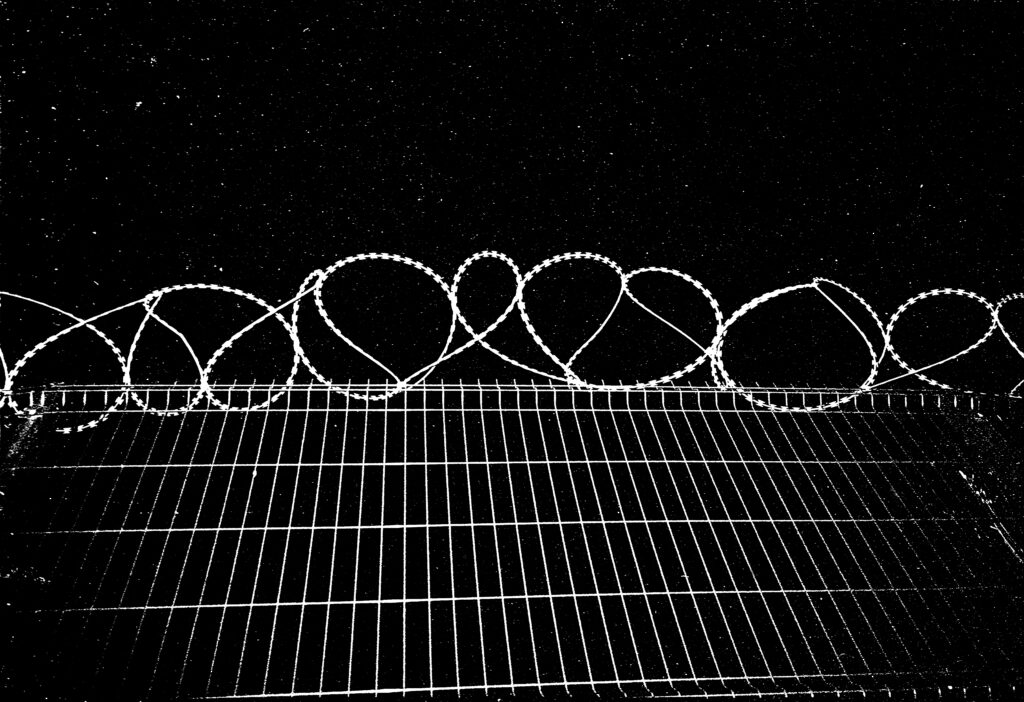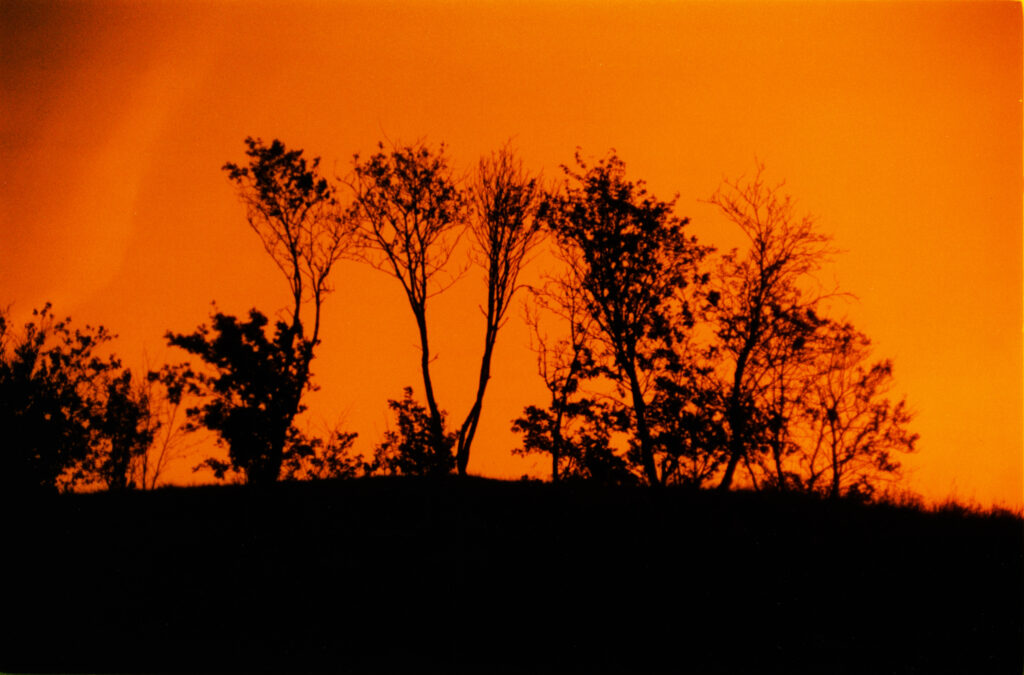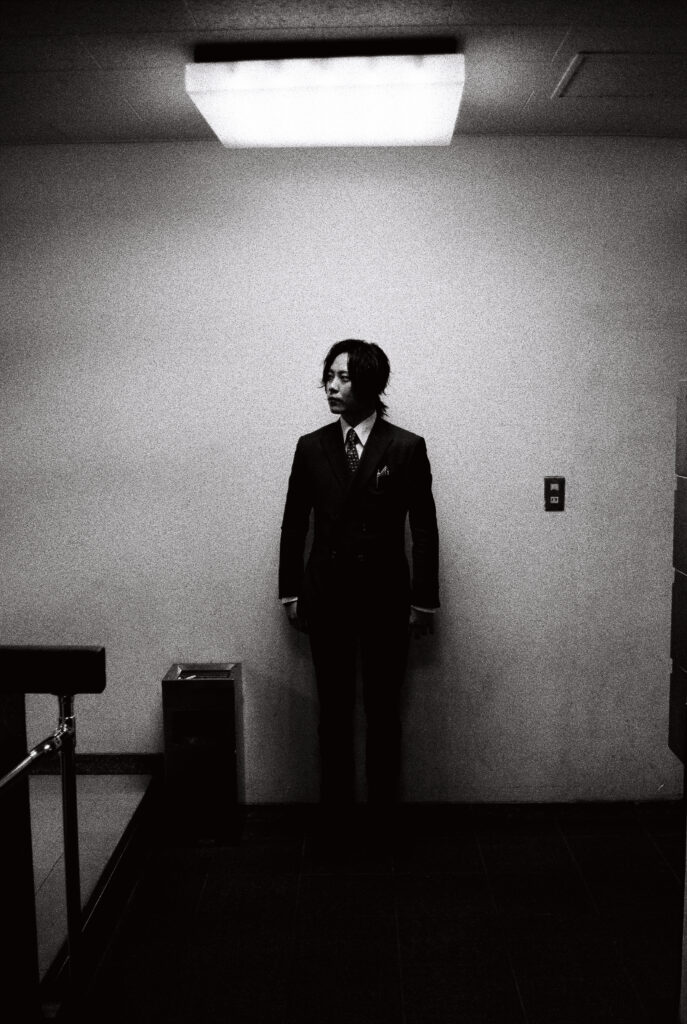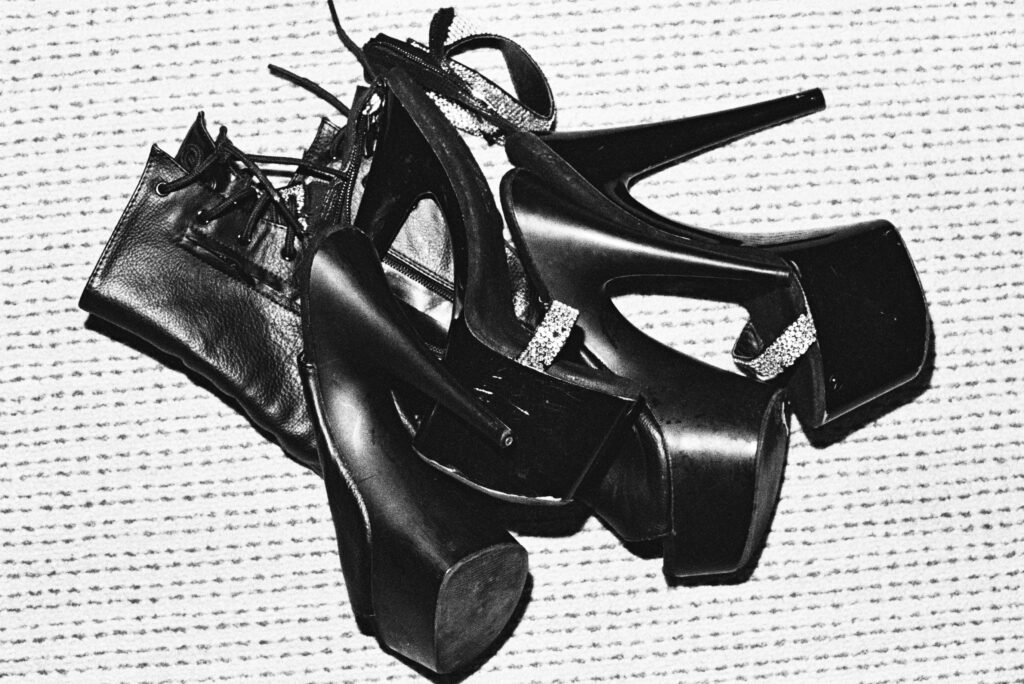Candela Capitan Do you remember I called you once?
Paul McCarthy Sure, I remember, you wanted to come here –and I said: “Yeah, sure, if you want to come, come!” Where are you now?
CC I’m in Barcelona!
PMC I think my favorite city is Barcelona—though maybe Berlin is up there too. I really love Barcelona. I was actually supposed to work on a theater piece there. It was planned to take place in both Barcelona and Madrid, but it ended up falling through. We were working on a project called A&E, Adolf & Eva, Adam & Eve and were so sure it was going to happen. It felt like everything was in motion, but then, last year, it all just collapsed. Nothing came of it. There are still some conversations happening—phone calls back and forth—but these things take so long. Once something falls apart and stays dormant for six months or more, you start to wonder if it’ll ever come back.
CC It’s so difficult to get projects approved in Spain..
PMC And it’s always a little bit painful when something doesn’t go through, who knows, maybe we’ll manage to do it.
CC Regardless, It’s such a pleasure for me to be speaking with you! I’m a huge fan. I come from the world of choreography, but I’m deeply connected to performance art. My work draws from movement, blending elements of choreography with aspects of performance. I think that’s part of why I’m so drawn to your work – I feel like we share some common ground.
PMC I actually know of your work through Instagram. It’s interesting – with Instagram, you end up following so many people. I’ll admit, I’m a bit addicted to it, but I find myself connecting with certain types of imagery or ideas that stand out. I think I probably started following you because something in your work felt familiar or resonated with me. I was reflecting on that recently. I have some close friends who are dancers and choreographers – some are part of troupes, while others collaborate with different groups. In performance, there’s often this natural overlap with musicians, actors, or other dancers. The lines between disciplines start to blur. A good friend of mine is Simone Forti, and with her, those lines are completely blurred. As a dancer and artist, her connections with musicians and visual artists have always been significant. Simone is often considered a dancer, but she’s had a major influence on artists across different fields. Dan Graham once told me she was a key influence on many minimalists like Robert Morris – maybe not Donald Judd, that might be a stretch – but definitely Morris, and artists like Charlemagne Palestine in the 70s. I remember seeing your piece where you keep rolling, and it made me think about repetition – the endurance of it, and how repeating something over and over carries its own weight. There’s a sense of irony in that too. I think repeating an action or a word or a sentence over and over for an extended period of time, for the viewer or the performer, it can become ironic or absurd. When I think about your work, I find myself wondering – how do you think about irony? Maybe that’s the first question. How do you approach irony in your work? In mine, I often turn a situation upside down. That gesture, I think, is a layer over a deeper subject or issue. I think repetition can also bring something up, something deeper.
CC I think my work might have less irony, or at least it feels that way. I see my performances as more serious – maybe because I tend to confront myself in ways that feel heavier. I’m not sure. It’s not necessarily political in a direct sense, but more about how I construct my pieces. That said, irony plays a big role in how I build movement. Without it, I feel like something is missing. For me, it’s a bit like that – if my work doesn’t have a sense of the uncanny, it doesn’t feel as interesting or engaging, at least for myself. I don’t know. I work a lot with the internet and how our generation’s imagination is shaped by it – how everything now revolves around social media and the way we absorb so much from being online. For me, that imaginary world isn’t entirely serious, and I feel like irony naturally becomes part of it. My work reflects that – there’s irony in the way I engage with this digital space. I was actually thinking about something else before this. How do you see our generation now? You’ve always worked with devices, screens, and technology, and I feel like I’m exploring similar ideas, but in the context of a generation that’s hyper-connected through platforms and social media. I’m curious – how do you feel about that now? How do you connect with this shift?
PMC I think, in some ways, it goes back a long time for me – to the 60s and 70s – when mediums/genres were starting to blur. There was this merging of dance, theater, music, film, art, painting, and drawing. I was lucky to be in a radical school at that time, but I was also actively seeking out the edges of things. Even from an early age, I felt like I was trying to leave something behind or break away from it. I wanted to make work using tape recorders, cameras, the motion picture, film. By the late 60s, I was already drawn to video because it offered something new. You could record for long periods, integrate sound, and immediately see what you were recording, see yourself on a monitor. At that time for me, all genres felt radical – painting, sculpture, drawing, dance, film, poetry. I was interested in minimalism, experimental film, performance, and happenings. It all converged. I did paintings flat on the ground as an action in the studio, without an audience, performance actions. I remember once, in 1967, I was assigned to make a kinetic sculpture in school, and I jumped out of a window – inspired by Yves Klein. That relationship between the body, sculpture, and action has stayed with me. Over the last 15 years, I’ve become deeply involved in video – recording, editing, collaborating. I write scripts that allow for improvisation, with key blocking moments but room to explore between. Sometimes we record for days, accumulating material that then traps me in the editing process. To answer your question about social media – I was interested but slow to engage with it directly. I never made a website or actively posted, though I followed what others were doing. Streaming fascinated me, but I felt too immersed in my ongoing projects to shift focus. The same happened with virtual reality – I was curious but hesitant, until someone asked me to create something, and I ended up making 30 VR pieces. Now, I’m obsessed with AI and work with it daily. Sometimes interests simmer until the right moment arises. Today, I’m performing, doing an action live and altering the recorded image through AI and then streaming the action through social media. I recognize the importance of social media and digital platforms – it’s not a lack of interest in what it is, but more about time and priorities. I don’t know where this dabbling in AI will end up.
CC What about galleries? Would you say their role, or importance, changed over time?
PMC I think possibly galleries are becoming obsolete. I think also in some cases, galleries are being run by people who are out of touch or placating collectors who don’t realize what is done, expressed, or formed by artists. I feel like there’s something happening that the art world isn’t fully recognizing. They’re not really interested in engaging with it creatively. During COVID, for example, galleries suddenly realized they needed to do online exhibitions. So they just hired people with technical skills – people who didn’t really get what artists are about. It became, “Give us the material, and we’ll handle it.” But artists struggle with mediums – we fuck with them, break them, and rebuild. That’s part of the process. So yes, I’m interested in how social media intersects with art.
CC I’m not really interested in AI. I’m not sure why – maybe I’ll understand it one day, but for now, it feels too digital to me. I love talking about streaming, how we connect with others through Instagram, and what’s happening on the internet. But I don’t feel very connected to digital imagery. I don’t know why.
PMC AI to me feels like a massive iceberg that we haven’t even hit yet. When I first interacted with AI images, it felt almost like a revelation – the fascination was immediate. I don’t think of it as a tool I need to train or control. I view AI more as a collaborator, and I’m not interested in the process of training it. Maybe I am training it, but that’s not my focus. What interests me is the layers, the speed, and the unpredictability of the images, the hallucination, or dreaming it produces. I’m not interested in the slick AI images, I’m more interested in distortion, blurred images. As an image maker, this speed and layering are compelling to me. A lot of my performance work is centered around creating an image, whether that’s a visual or a conceptual one – the making of an image and the effect on me being in it. Primarily it’s about the persona, entering another world. I think how I interact with AI is similar to painting and drawing. There’s a connection between drawing, painting, and how I engage with AI. Both are about creating something that evolves. The process is similar – I give it something, a prompt, an idea or a live or recorded input, and then I watch how it takes shape. There’s something in that, like watching a painting come to life, seeing the layers unfold.
CC And what about streaming, where does your interest lay in that?
PMC I’ve been really interested in that for a while now – not just in the traditional art world sense, but in how individuals, who aren’t necessarily part of the art scene, are using streaming platforms. These streamers can engage with thousands of people, creating a phenomenon that’s beyond anything we’ve seen in the art world. It’s a different kind of interaction, a new way of reaching a huge audience that doesn’t follow the traditional art world or tv and film world structures.
CC I work a lot with social media and streaming, but I’m always more focused on how these contexts are affecting my generation. I think that’s part of why I don’t connect with AI – I don’t think of my work as an image. I’ve never seen it that way, and I’m only realizing it now. Maybe it’s because I don’t create traditional paintings. I do work with visuals, but not in that final, static sense. I’ve always thought in terms of movement or action. I’m more connected with the action itself, the process, rather than just the image. I think a lot about how streaming is changing the way my generation lives. I even did a performance about this, looking at a sexual streaming platform called Chaturbate. Now I’m working on a project that focuses on the massive buildings in Asia where influencers and digital creators live and work. These huge complexes house rooms for influencers to do production, often at a very young age, and under intense pressure to produce constant content for platforms like TikTok. It’s like a hyper-production machine. They’re doing it all day long, creating content, doing advertising, and living under this very high-stakes, commercial environment.
PMC I think, you know, when it comes to mediums like streaming or AI, they’re just forms, extensions of something bigger. I’ve always been interested in video, film, and cameras, and in a way, streaming and AI are just natural extensions of that. I was drawn to media, especially film in the early 60s.
For me, performance is the core of it. The small drawings I make aren’t just images—they’re scripts. They’re a series, not singular. There could be 20 or 30 drawings in a series. They’re about what I imagine I’m doing or doing with others. The action, the performance, is the critical element, the core is always the performance. That’s what I care about the most.
I’m interested in streaming, I’m interested in video. I stopped performing in front of people in the early 80s and only did it in front of a camera. But now I’ve started performing in front of people again.
CC What made you come back to performing?
PMC I began performing and creating work with an actress and artist, Lilith Stangenberg, who’s deeply involved in theater and film. That led me into theater performance, which was something I had never done before. I wasn’t initially interested in it. Part of it was a rejection of what I thought of as traditional theater, the stage, the position of the audience. I was more drawn to the idea of performances, actions, happenings, taking place anywhere—whether in someone’s bedroom or on the street. A lot of the time, projects, work, happen because of an opportunity or coincidence, and then you dive in. That’s what happened with theatre for me. It wasn’t something I planned.
CC And why did you stop?
PMC I did it performances from 1967 to 1983. It was all within the context of the art world or the alternative art world. I did a performance in a gallery sometime in the 70s, but mostly it was in alternative spaces or my studio, or someone else’s studio. In the 80s, the art world started to change, and so did the alternative spaces. They became more like cabaret environments, where stages were built, rooms were painted black, and lights were set up. It changed performance art. It became more about entertainment performance. Many artists involved in performance in the 70s at that point checked out for different reasons. Some went off to explore other parts of life or moved to places like South America. The world was changing, and my interest started to shift too. I wasn’t as interested in performing for an audience anymore. Early on, I made work in a studio without an audience, just using a camera. I found myself going back to that original way of working—performing in front of a camera rather than an audience. I didn’t feel like I needed an audience. But now, over the past few years, and especially since 2019, I’ve been more interested in performing in front of an audience. Lilith and I did about 100 performances, ranging from two to four hours long, but only 15 of them were in front of an audience. The camera still played a central role, but I’m now more interested in engaging with an audience. Most of what I’ve done with Lilith has been done in constructed set-architectures that we’ve built, in nature, or existing buildings/houses, and always in front of cameras.
CC Now you can do it in front of a camera, but without an audience.
PMC I was thinking about your work in relation to these actions that are repetitive. There’s something about the process of standing up, rolling, then standing up and rolling again, and doing it repeatedly. What is happening within yourself, How long do you do it? I’ve made similar pieces where I’d spin for an hour. With these repetitive actions, there’s a connection or empathy that builds between the audience and the performer. It becomes a physical or emotional experience for them both.
CC What? I don’t remember this piece?
PMC Well, it’s similar to your continuous rolling piece. I spin standing up for an extended period of time, sometimes holding the camera. I did it a number of times. But when you’re rolling over and over again, do you get dizzy? Do you do it because of that sensation, dizziness, or is it about something else?
CC If you roll like i do, not spin, you don’t get dizzy. You just get super tired.
PMC It’s related to being exhausted. I know a number of actors, that before they start to perform, they spin. I do and Lilith does.
CC I do too. It’s a proper ritual.
PMC I think it’s a transition. It’s like you’re preparing for something. That spinning creates this kind of delirium, a shift—like when you stop, you’re not in the same place you were when you began. It’s a way to enter another world, a world of action, a world of performance. It’s a process of starting something new. In these A&E pieces we’ve done, Adolph Hitler and Eva Braun drank champagne in the bunker, and it seemed fitting to us that as part of the work, the performance, we should drink champagne. For me, in this case, drinking became a connection to spinning. Alcohol, in a way, loosens the brain, helps to enter a different headspace. I would drink throughout the performance, and there were times when I was quite drunk. It became a ritual, entering the next phase, the next world – a transformative one. It’s about leaving this world behind, shaking it off, and entering another space entirely. That’s what the spinning and drinking do—they prepare you to transition. I do think at times though, the drinking made me stupid, a true lush, a drunk.
CC My practice has a lot of that too, but maybe not exactly rolling like this. I think what I do is put my dancers—or myself—into this in-between world, this bridge world. It’s about preparing to enter another space, another reality. It’s that same kind of transition, that same ritual of moving from one world to another, whether it’s through action, movement, or setting up the right conditions for a shift. It’s about creating that moment of transformation, where you’re not quite in one place anymore, but not yet fully in the next. It’s that preparation, that threshold, where the work really begins.
PMC Do you usually work with the same dancers?
CC I work with six dancers, generally, but It depends on the specific action required or the type of performance. Some dancers are more comfortable with certain movements, while others aren’t. For the performance you mentioned earlier, The Death at The Club, some dancers were willing to stay on the floor for 40 minutes, and others were not. There’s that balance between what they want to do and what the performance requires. The rules I set are flexible—dancers always want to perform perfectly, they want to push themselves, but they also know their limits. For me, the idea of working with different types of dancers or bodies is intriguing. It’s less about perfect technique and more about the expression of movement and action, and how bodies respond to these rituals and transitions. It’s about pushing boundaries and seeing how different kinds of bodies engage with that process.
PMC Did you rehearse for this one?
CC No, no rehearsal. We just did it.
PMC So, when do you rehearse something?
CC For example, have you seen my piece with five dancers in pink? Yeah, for that one, the choreography is like a score. It has 17 figures, and the choreography is also written out. For that, I need to rehearse because they all perform the same movements, and I rehearse for months.
PMC Do you rehearse for months as a group or individually, or both, perhaps?
CC First, I always follow the same structure where I spend about one and a half to two years working on a project, but the project has different timings. Initially, I do a small piece with myself, a performance with just me, and then I do a second performance with the same concept but for a larger scenario. So in each project, there are two performances: one that I do alone, where I’m in the studio by myself, and then I invite more people to join.
PMC Once a performance is completed, does it become a piece that you can perform at different locations?
CC Yeah, I finalize the project, and then I move it. I think I’m always doing the same—I don’t like to change my projects. I move them like a dance company would.
PMC That is something that exists more in dance, in music, and in theater. But you don’t see it as often in performance art. The idea of creating a piece and repeating it in different locations isn’t as common. In performance art, you usually do it once—maybe twice or three times—and that’s it. In my case, the subject or character carries through. For example, I had a piece where I played a sea captain. I performed it four times, but it changed each time. It was never the same, but each time I was still that sea captain. It’s similar to shooting a film. If you film over 30 days, you’re that character for 30 days, but the actions shift as the narrative progresses. In A&E, Adolf and Eva’s performances would change based on the scenario. One time, they’re on a picnic; another time, they’re coming home after dinner. But certain actions were repeated in every performance. Those repetitions were rituals, their way of being. The surroundings and context would shift, repetition became critical, and I realized how much that reflects daily life. Every morning, I have coffee. The day changes, but the coffee is constant. These repetitions are part of life. I see that in my work too—there’s a similarity, a thread that carries through. I repeat it because it feels like I’ve found something I need to continue exploring. I’ve noticed that some elements in my work never seem to end. They’re internal, personal things that I keep coming back to.
CC I love when someone repeats the same thing over and over, but each time with a different perspective. It’s like they’re driven by these obsessions, you know? They keep exploring the same idea forever, but actually not quite.
PMC I can see things I’m doing now that trace back to 40 years ago. Even though a lot has changed and evolved, certain themes persist. I remember reading a while back about the death drive. This idea that certain traumas stay with you forever, certain issues you just keep repeating and repeating. The nature of the death drive is that you never escape it. It’s an addiction, and I don’t think I want to escape it.
Are you working on something new right now?
CC I’m working on a new piece, something to do with the subject of cows.
PMC Cows?
CC Not real ones. What I mean is, I’m analyzing these companies in Asia that collaborate with young influencers, and I’m connecting this with hyper-production and cows. Hyper-production of videos, streamings, content for social media. These companies contact young people to create a massive amount of content for social media platforms. And I’m drawing a connection between this hyper-production of digital content and the hyper-production of milk from cows.
PMC Are you engaging one of those companies directly? Using them?
CC No, not directly, it’s more of a territory of inquiry, a theme, in relation to younger generations, especially gen alpha.
PMC Will you use social media as part of it? Will the performance exist on social media?
CC I always create two scenarios: one for social media and one for the stage or the physical space, simultaneously. When I do it, it’s live —streamed through a platform or website. I’m kind of building two spaces simultaneously. It depends on the context. For example, in my last performance, Solas, we streamed it on a sexual streaming platform. This created two types of audiences: the real audience present in the performance space and the audience accessing the platform to see porn. On the screen, there’s a chat interface, so what’s fascinating is that the audience in the physical space and the audience on the platform chat about the performance simultaneously. For those not in the room, they receive the feed through the platform. The number of people varies depending on where I stream. For instance, on Instagram, I could have around 1k viewers. But on Chaturbate, the audience tends to be smaller because they quickly realize it’s a performance, not what they expected, so they might only stay for a short time. The platform choice really influences the type of engagement.
PMC What does the use of social media in your work represent? What is it about?
CC It’s about different things, depending on the platform. For instance, with the sexual streaming platform, the focus was on connecting two kinds of audiences. One audience came to watch dance, while the other came to consume porn—though some might not even realize they were engaging with porn. It depends on the project. For example, my next performance will involve TikTok because the imagery of my new piece aligns more with TikTok’s aesthetic. On TikTok, there’s a lot of streaming with bizarre content, like 1,000 dogs in a pool or Asian girls doing nails for 20 hours straight.
PMC I mean, there’s something about the subject you’re choosing to work with—these influencers in Asia, right? Are you trying to understand what they’re like? Or were you saying that, as humans, they essentially become the product?
CC Yeah, exactly—they become the product.
PMC I guess that’s what I’m exploring. The work I’m making seems to grapple with this proposition, though it’s not always straightforward. There’s an interest in these influencers, but I might be looking at it differently. Maybe it ties back to our earlier discussion about irony—or something close to that. But I think my focus is less on social media itself and more on something visceral. It’s about the body, the physical, and its abject existence. These mediums—social media, influencers—are interesting to me in terms of their effect on the body and consciousness. What’s happening when someone becomes a product? What happens to their body and their sense of self? That said, my work tends to circle back to the visceral, the physicality of existence itself. So while the phenomena of influencers and streamers intrigue me, it’s not just about them—it’s about the deeper, more primal aspects of existence. The subject might seem futuristic, but for me, it’s tied to something deeply physical and human.
CC I love your answer, and it was extremely interesting speaking to you. You’re so focused—almost obsessed—with the importance of the body itself, and that’s always been so fascinating to me. Your work is so important to me! Should you ever manage to do a project in Barcelona, or even Europe, and need a performer, I’d be happy to do it!
PMC Let’s stay in touch.
